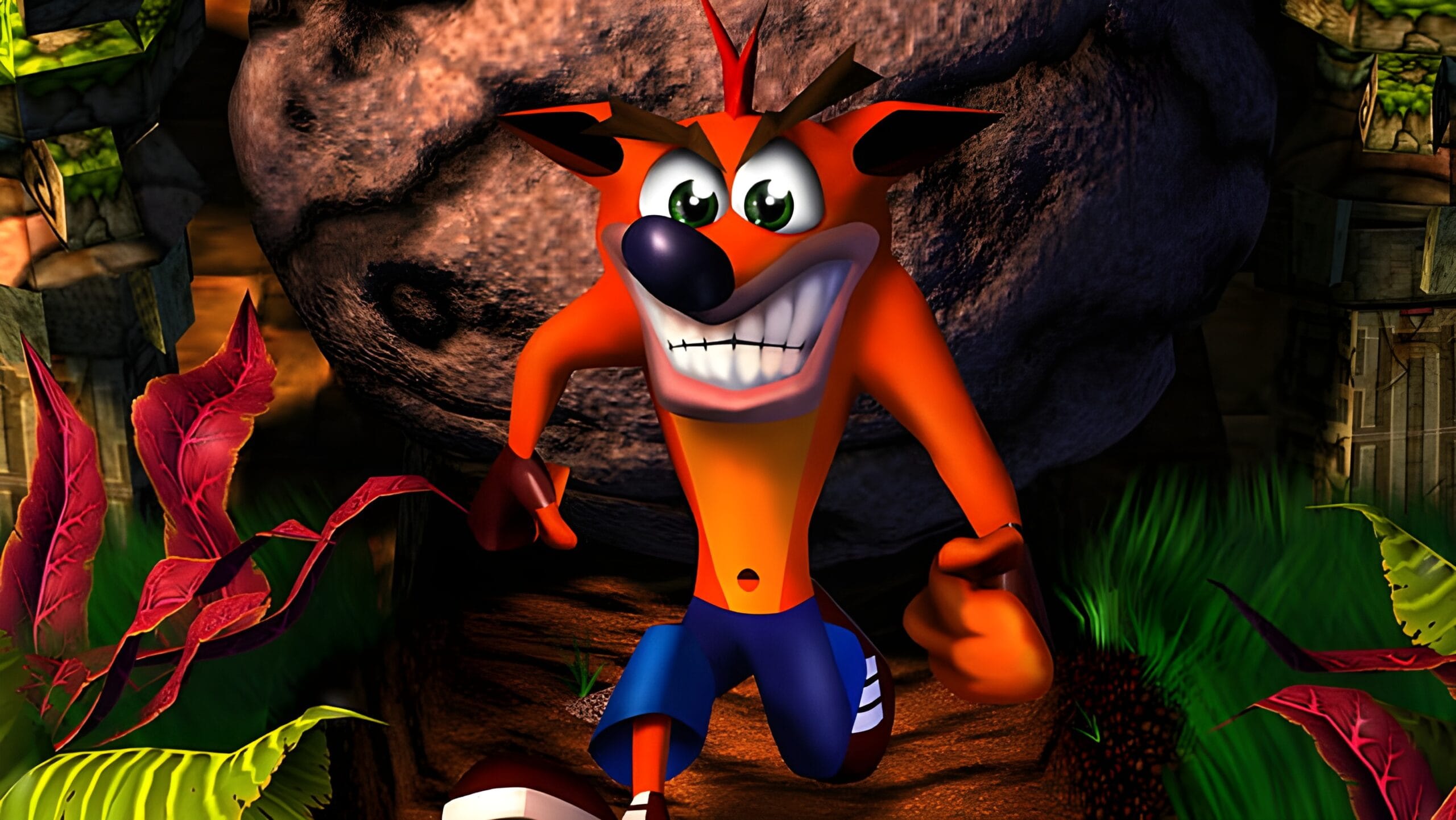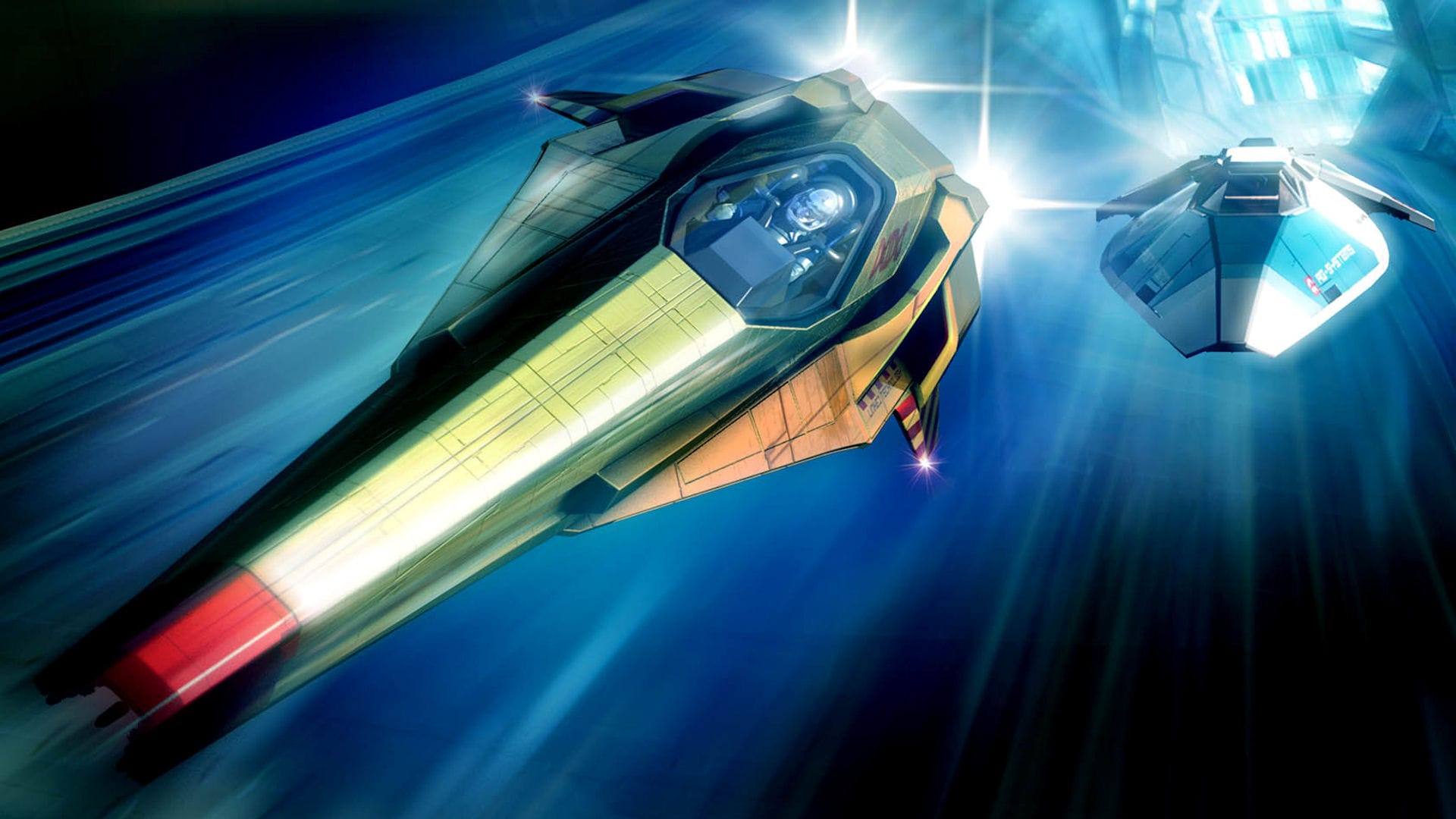Before dual analog sticks became second nature and open worlds stretched as far as the eye could see, platformers were the genre that defined console greatness—and no system did it with more flair than the original PlayStation. This was a playground where gravity-defying marsupials clashed with snarky geckos, claymation freak shows tangoed with anime-infused robo-cats, and first-person rabbits leapt toward the future of 3D movement. It wasn’t just Crash and Spyro—though they certainly ruled the roost. The PS1 was a hotbed of innovation, giving us genre-blenders, art-house oddities, and bold new mascots that often hit harder than the so-called heavyweights.
This was the wild west of platforming, when developers experimented with camera angles, control schemes, and surreal level design like their lives depended on it. The result? A library brimming with character, risk-taking, and pixel-perfect fun. Some of these games shaped the industry. Others slipped under the radar but deserve your full attention. These are the 30 best PS1 platformers—the icons, the outliers, and the unsung geniuses of Sony’s 32-bit heyday.
Crash Bandicoot
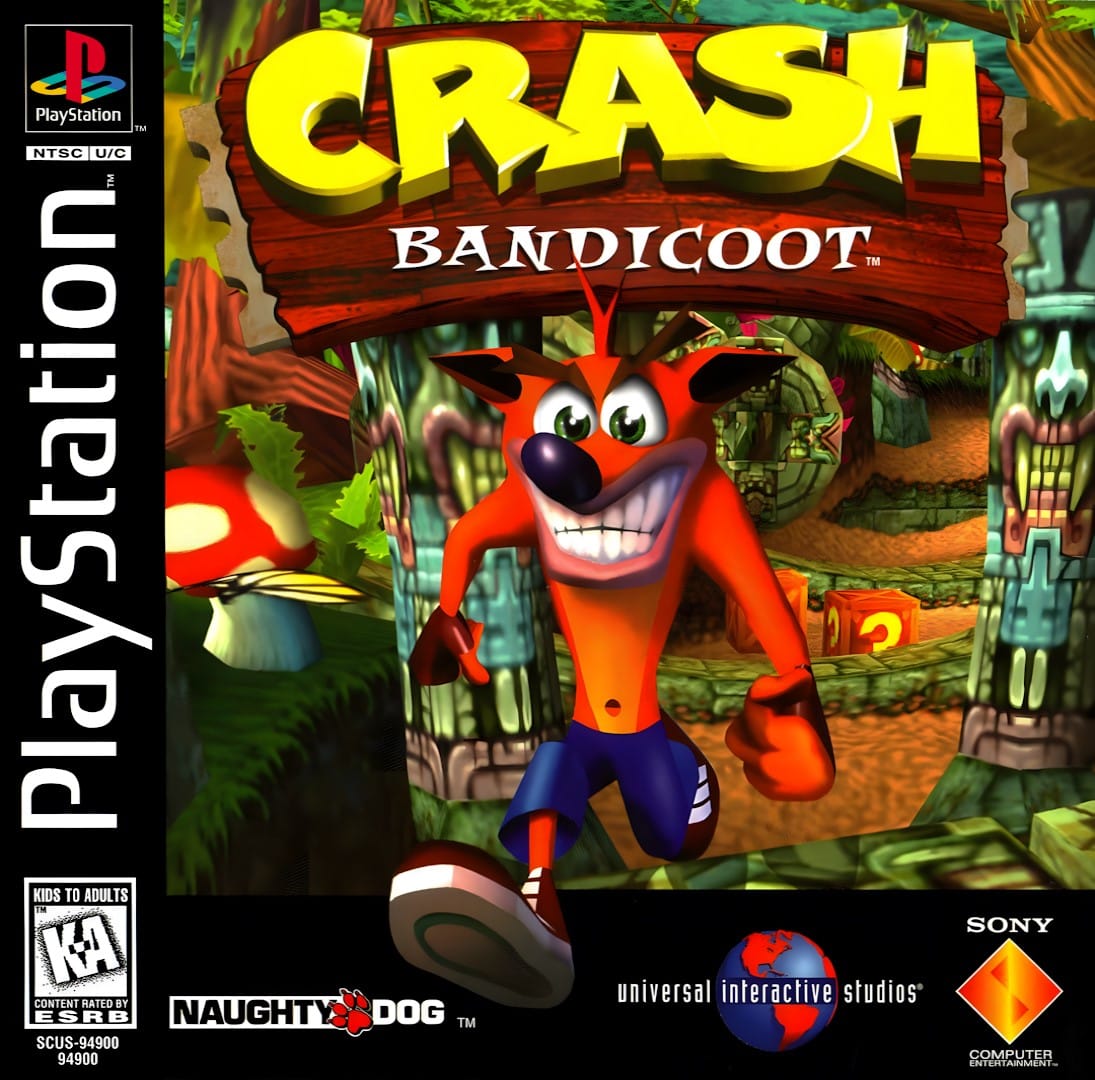
- Developer: Naughty Dog
- Release Date: September 9, 1996
Back in 1996, Sony was the scrappy newcomer in a console war dominated by Nintendo’s Mario and Sega’s Sonic. Enter Crash Bandicoot—a wild-eyed marsupial with sneakers, attitude, and a penchant for spinning through crates like a caffeinated tornado. It was fast, it was funny, and it was unafraid to be weird in all the right ways. Its blend of precision platforming and slapstick chaos gives it a distinctive rhythm, and the game’s visual personality—those oversized eyes, that toothy grin, those wild death animations—remains iconic to this day. There’s a tactile joy in smashing crates and dodging hazards that modern games still try to recapture.
Why It’s Worth Playing: Despite its tank-like controls and demanding level design, Crash Bandicoot remains tightly constructed and surprisingly addictive. Crash Bandicoot is pure platforming DNA. It’s challenging, stylish, and foundational—not just for PlayStation, but for 3D platformers as a whole. Whether you're a returning fan or a newcomer, there's real satisfaction in mastering its madness.
Crash Bandicoot 2: Cortex Strikes Back
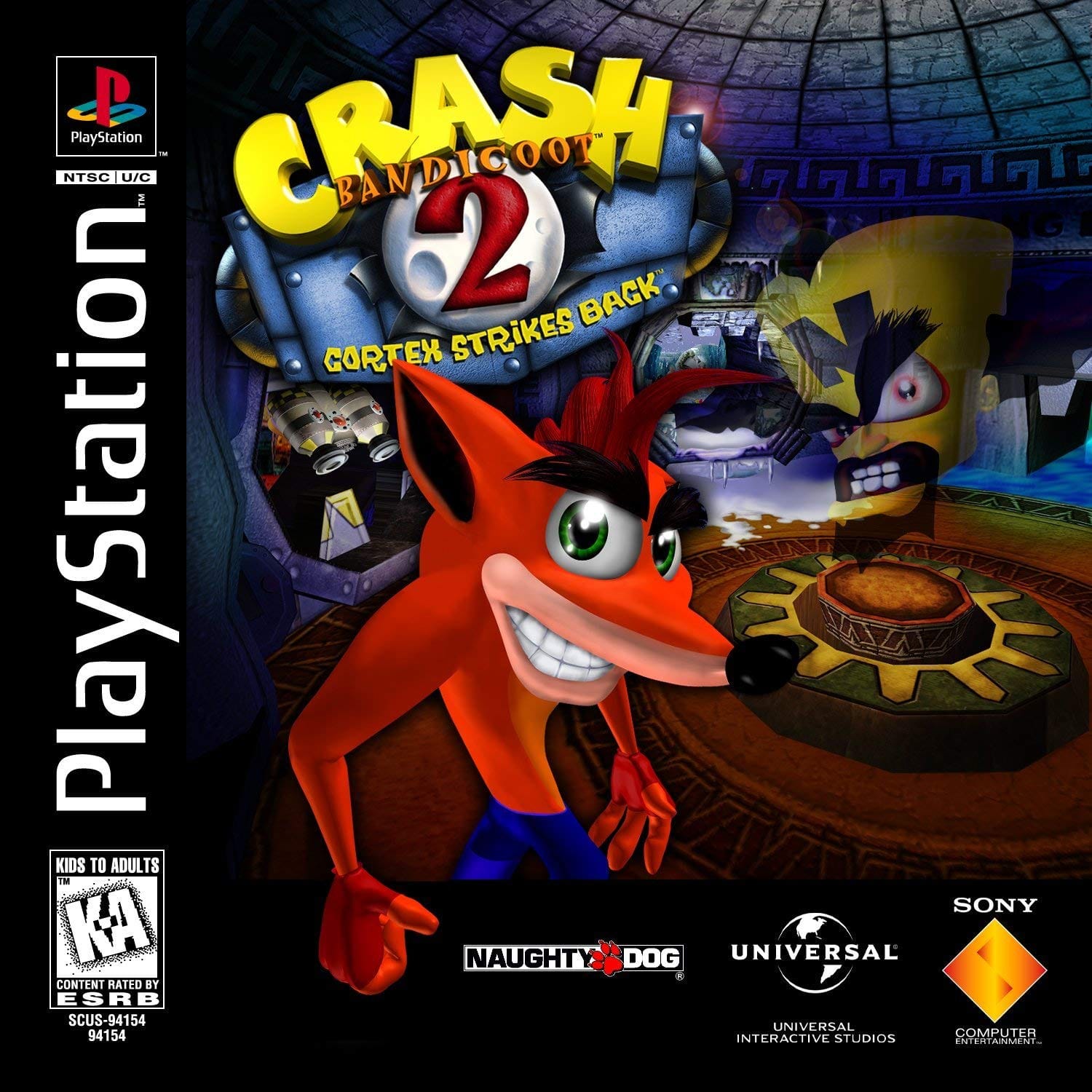
- Developer: Naughty Dog
- Release Date: November 6, 1997
If the original Crash Bandicoot was a high-octane proof of concept, Crash Bandicoot 2: Cortex Strikes Back was where Naughty Dog found its rhythm—and then some. Everything here is tighter, more deliberate, and more rewarding. Controls are more responsive, level design is more creative, and the difficulty curve is better balanced. The awkward forward-facing levels are refined, while side-scrolling and vertical stages shine with inventive new mechanics like the belly flop, crouch slide, and ice physics. Gone is the brutal trial-and-error frustration of the first game. In its place? A smoother, more player-friendly experience that still rewards skill and precision.
Why It’s Worth Playing: Crash 2 is platforming at its most polished on the PS1. It retains the charm and chaos of the original but layers in better pacing, more secrets, and a cleverer take on Crash’s world. It’s often considered the sweet spot of the trilogy—and for good reason. This is the one that made Crash a household name.
Crash Bandicoot: Warped
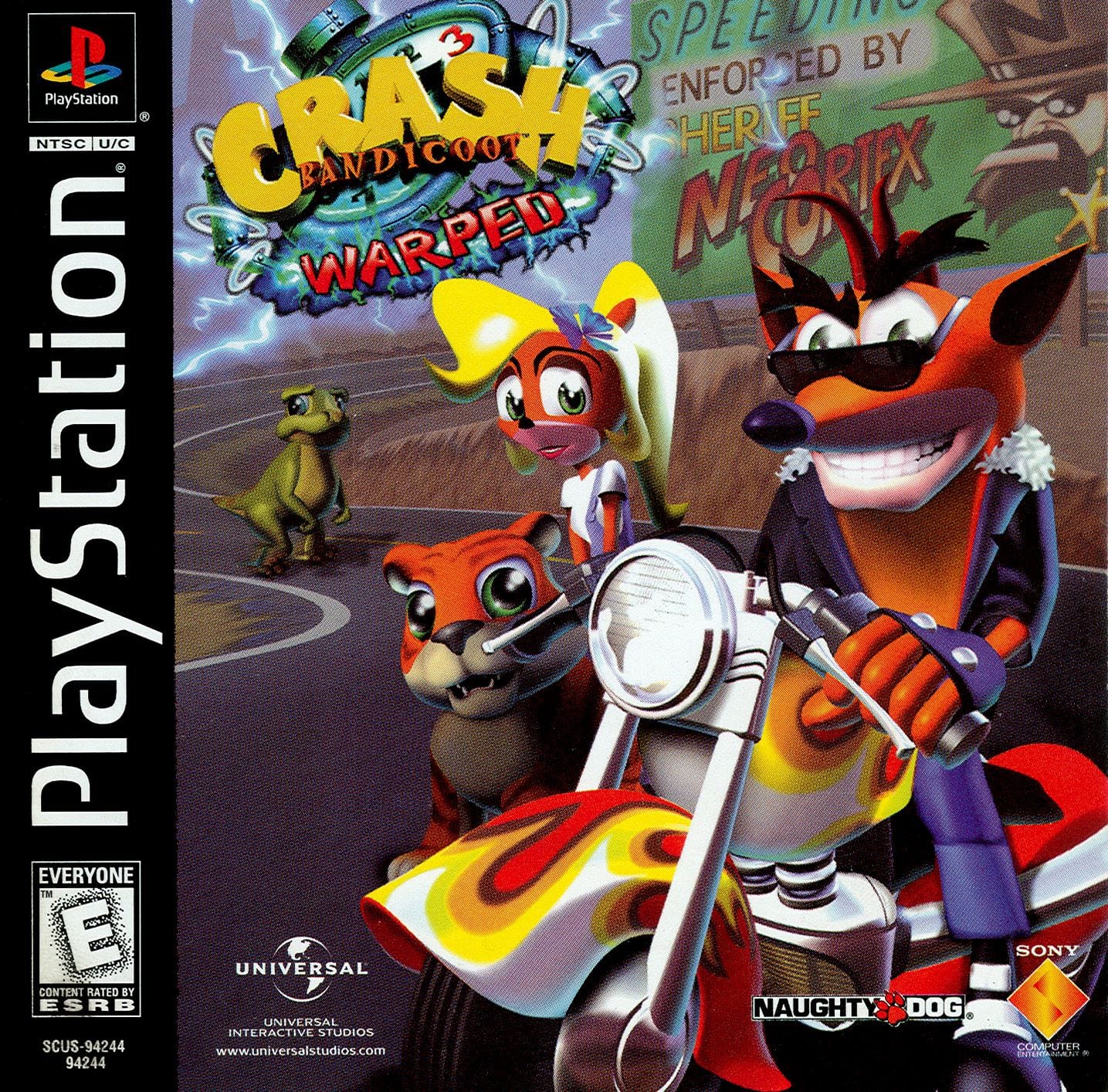
- Developer: Naughty Dog
- Release Date: November 3, 1998
Crash Bandicoot: Warped wasn’t just a sequel—it was a platforming victory lap. This game bursts with personality, packing in themed levels that whisk you from ancient Egypt to medieval castles, underwater ruins to World War II dogfights. New characters like Coco added playable variety, while vehicles—tiger rides, jet skis, motorcycles, and even a baby T. rex—shook up the platforming rhythm without ever feeling gimmicky. And the controls? Tighter than ever. Add in time trial relics for speedrunning bragging rights and a cheeky tone that leans into the absurd, and you’ve got one of the PS1’s most joyful platforming experiences.
Why It’s Worth Playing: Warped is the full Crash experience turned up to 11. It’s inventive, accessible, and endlessly replayable, with a masterclass in level diversity and momentum. Whether you're in it for the platforming challenge or the globe-trotting spectacle, Warped delivers like no other.
Spyro the Dragon
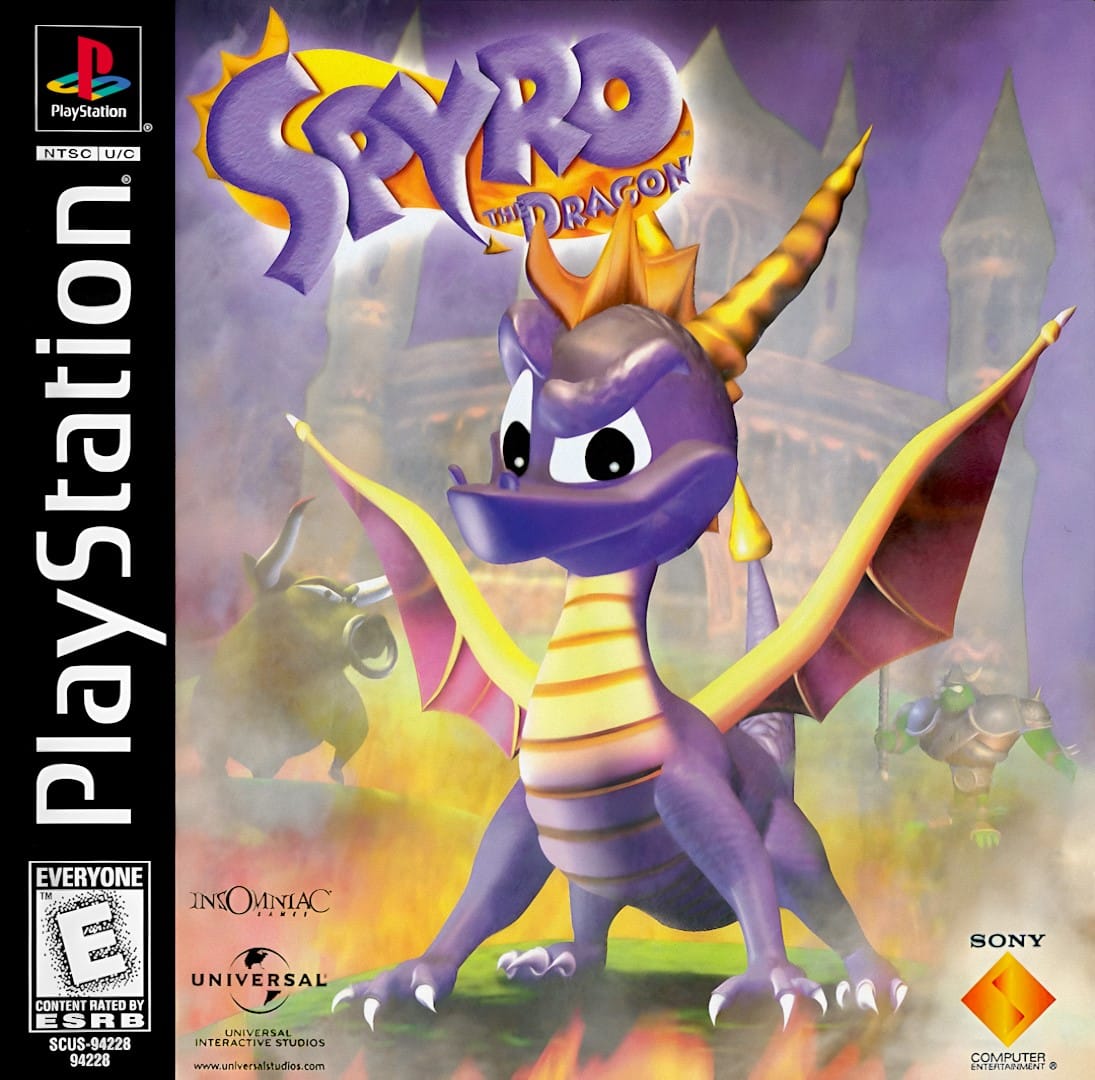
- Developer: Insomniac Games
- Release Date: September 9, 1998
While Crash Bandicoot was all spinning fury and high-stakes jumps, Spyro the Dragon glided in with a cooler, more laid-back energy—and it was exactly what the PS1 needed. Instead of relentless pressure, you got freedom: to glide, to charge, to torch enemies, and to chase down those infuriating egg thieves through vibrant fantasy worlds. The game’s art direction was a knockout, with candy-colored landscapes that felt like a living storybook. Stewart Copeland’s legendary soundtrack—both whimsical and rhythmic—added an extra layer of charm, and Spyro himself had just the right amount of attitude to make him a standout character without tipping into try-hard territory.
Why It’s Worth Playing: Spyro the Dragon is a masterclass in accessible 3D platforming. It’s a feel-good adventure that rewards curiosity and exploration over brute force. The controls are fluid, the world design is smart, and the entire experience feels like a warm, late-’90s hug. It’s the kind of game you can lose hours in without even realizing it.
Spyro 2: Ripto’s Rage!
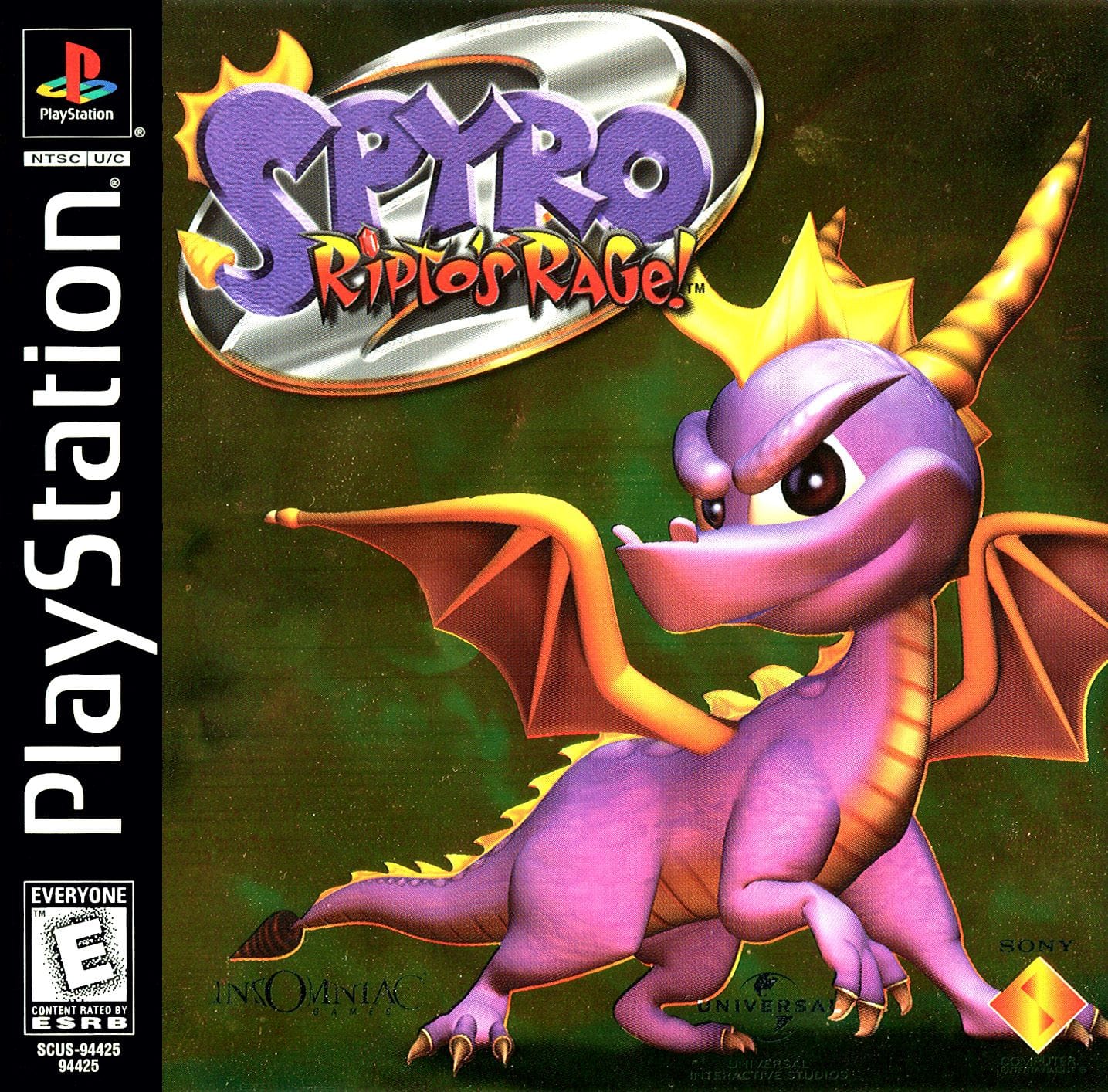
- Developer: Insomniac Games
- Release Date: September 9, 1998
If Spyro the Dragon was a delightful proof of concept, Ripto’s Rage! was the full realization of what the series could be. Gone were the simple “collect everything” objectives of the first game. In their place: cleverly designed side quests, quirky NPCs, and mini-games that felt like natural extensions of the world. Spyro learned new abilities like swimming, climbing, and headbashing, which opened up levels vertically and made backtracking genuinely rewarding. And Ripto himself? A villain with actual personality—a pint-sized tyrant who brought a real sense of conflict and momentum to the story.
Why It’s Worth Playing: Ripto’s Rage! is the perfect middle chapter—ambitious but still focused. It balances whimsy with tighter structure, and its world feels more alive than ever. The level variety is top-tier, the upgrades make exploration deeply satisfying, and the writing is sharper without losing its playful edge. It's not just a worthy sequel—it’s one of the PS1’s definitive platformers.
Spyro: Year of the Dragon

- Developer: Insomniac Games
- Release Date: October 10, 2000
Spyro: Year of the Dragon was Insomniac’s swan song on the PS1, and they didn’t hold back. It wasn’t just Spyro’s show anymore. From Sheila the kangaroo’s high kicks to Sergeant Byrd’s jetpack-powered chaos, each playable friend brought their own flavor and mini-adventures to the table, keeping the experience constantly fresh. The game’s structure remained tight, but the sheer variety on offer—from skateboard challenges to speedways and turret battles—meant you never knew what was coming next. And in true Spyro fashion, it all looked and sounded stunning, with polished visuals and another phenomenal soundtrack from Stewart Copeland.
Why It’s Worth Playing: Year of the Dragon is platforming comfort food at its absolute best. It builds on the strong foundation of its predecessors while injecting just the right amount of new ideas. It's the rare sequel that feels like both a celebration and a natural evolution. As far as PS1 farewells go, this one’s a fire-breathing triumph.
Klonoa: Door to Phantomile
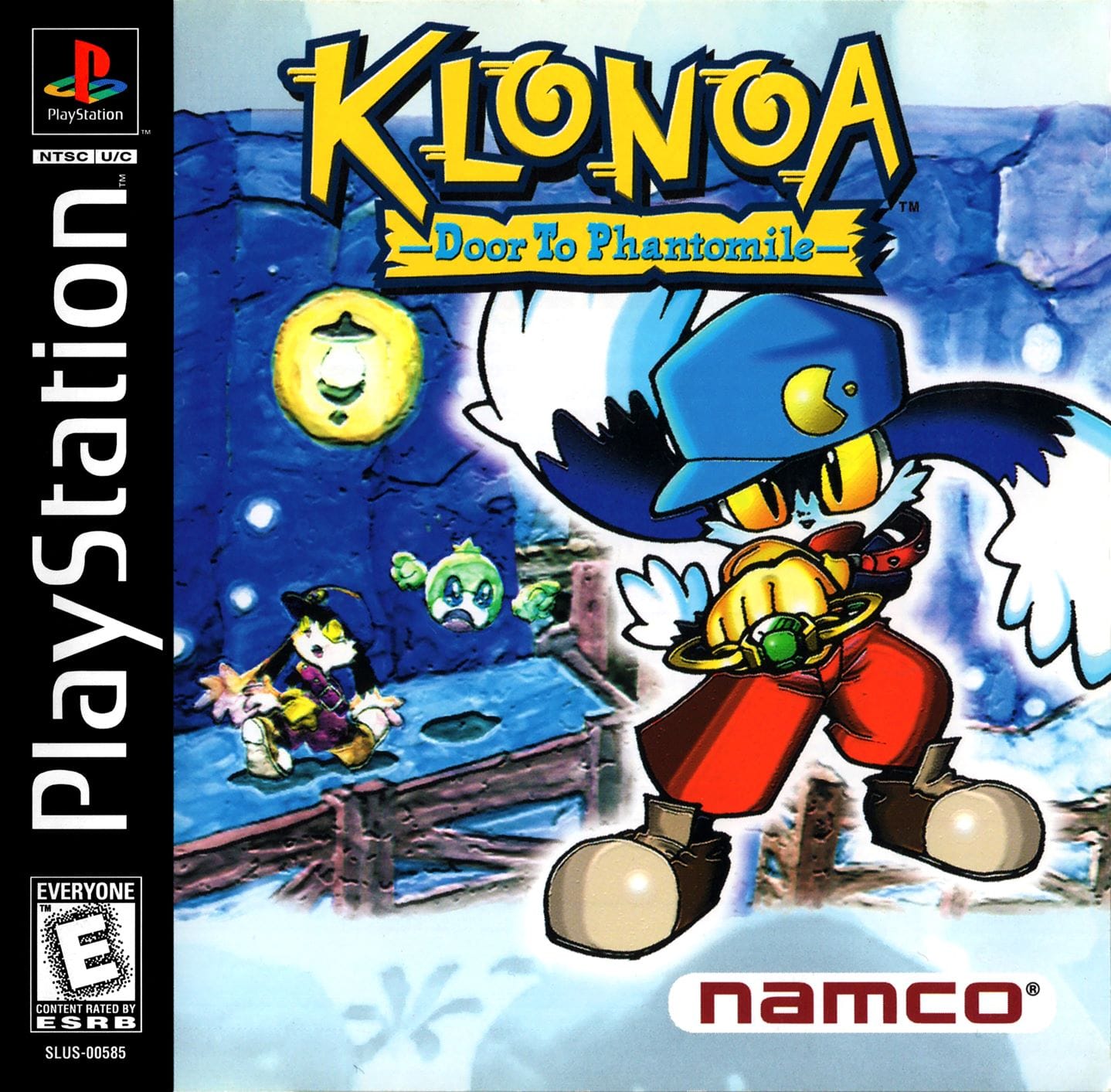
- Developer: Namco
- Release Date: December 11, 1997
Klonoa: Door to Phantomile isn’t just a standout platformer—it’s a deeply emotional journey wrapped in a deceptively cute exterior. With its blend of lush 2.5D visuals and a story that gradually shifts from whimsical to bittersweet, Klonoa manages to carve out its own emotional space in a library dominated by mascots and slapstick. The core gameplay strikes a perfect balance between simplicity and ingenuity. Klonoa uses his “Wind Bullet” to grab enemies and use them as tools—either to double-jump or solve environmental puzzles. The game’s world design—floating isles, mysterious temples, and surreal dreamscapes—is layered with subtle melancholy and atmosphere, drawing players deeper into its quiet narrative twists.
Why It’s Worth Playing: Klonoa is a rare platformer that tugs at the heart as much as it tests your reflexes. It’s short, sweet, and unforgettable—blending Nintendo-style charm with surprising emotional weight. If you've never played it, you're missing one of the most soulful gems the PS1 has to offer.
Tomba!
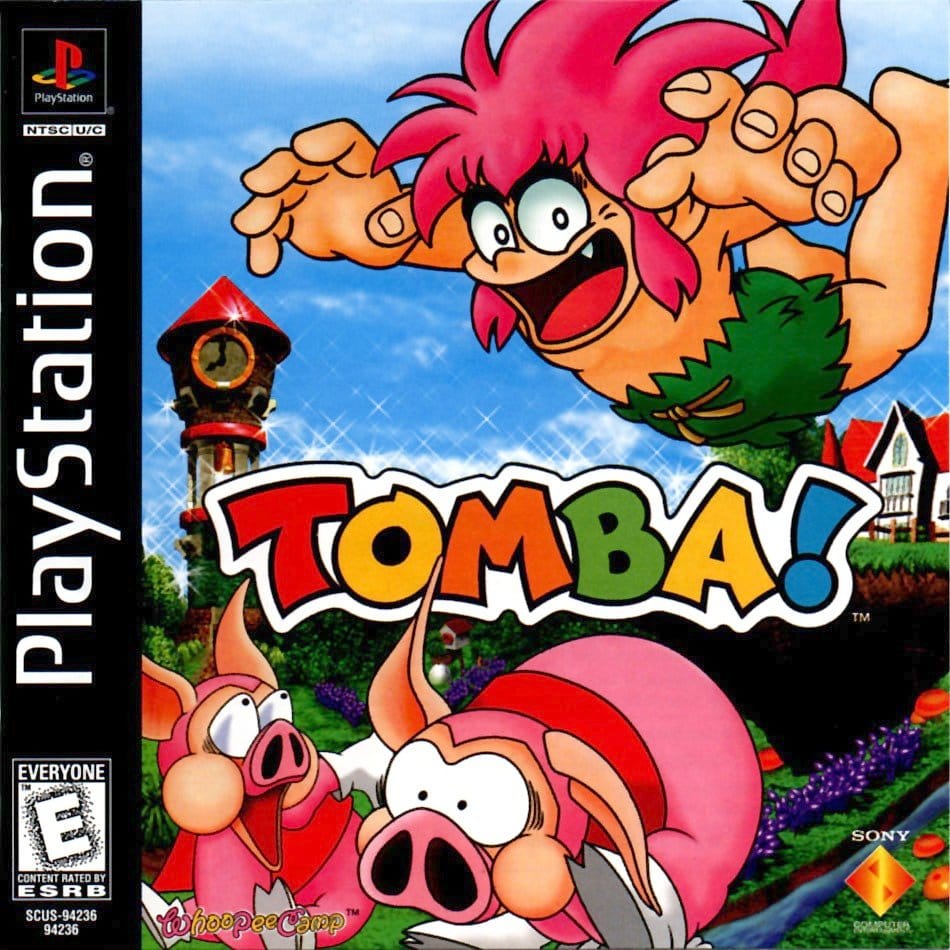
- Developer: Whoopee Camp
- Release Date: December 25, 1997
Tomba! is one of the PS1’s most inventive and delightfully unhinged platformers. What looked like a cutesy side-scroller quickly unraveled into a quirky open-ended adventure packed with RPG-lite quests, hidden secrets, and nonlinear progression. At its core, Tomba! is a side-scrolling platformer with brains. You’ll talk to NPCs, solve offbeat puzzles, unlock new areas with acquired abilities, and backtrack Metroidvania-style to complete dozens of side missions. The game’s charm is off the charts—between the weirdly lovable pig enemies, the expressive animations, and the utterly bonkers world design, it never stops surprising you.
Why It’s Worth Playing: Tomba! is the kind of game that rewards curiosity and experimentation. It blends action, exploration, and problem-solving in a way that feels decades ahead of its time. Add in a healthy dose of absurdity and a vibrant, handcrafted aesthetic, and you've got one of the most original platformers ever to grace the PS1.
Tomba! 2: The Evil Swine Return
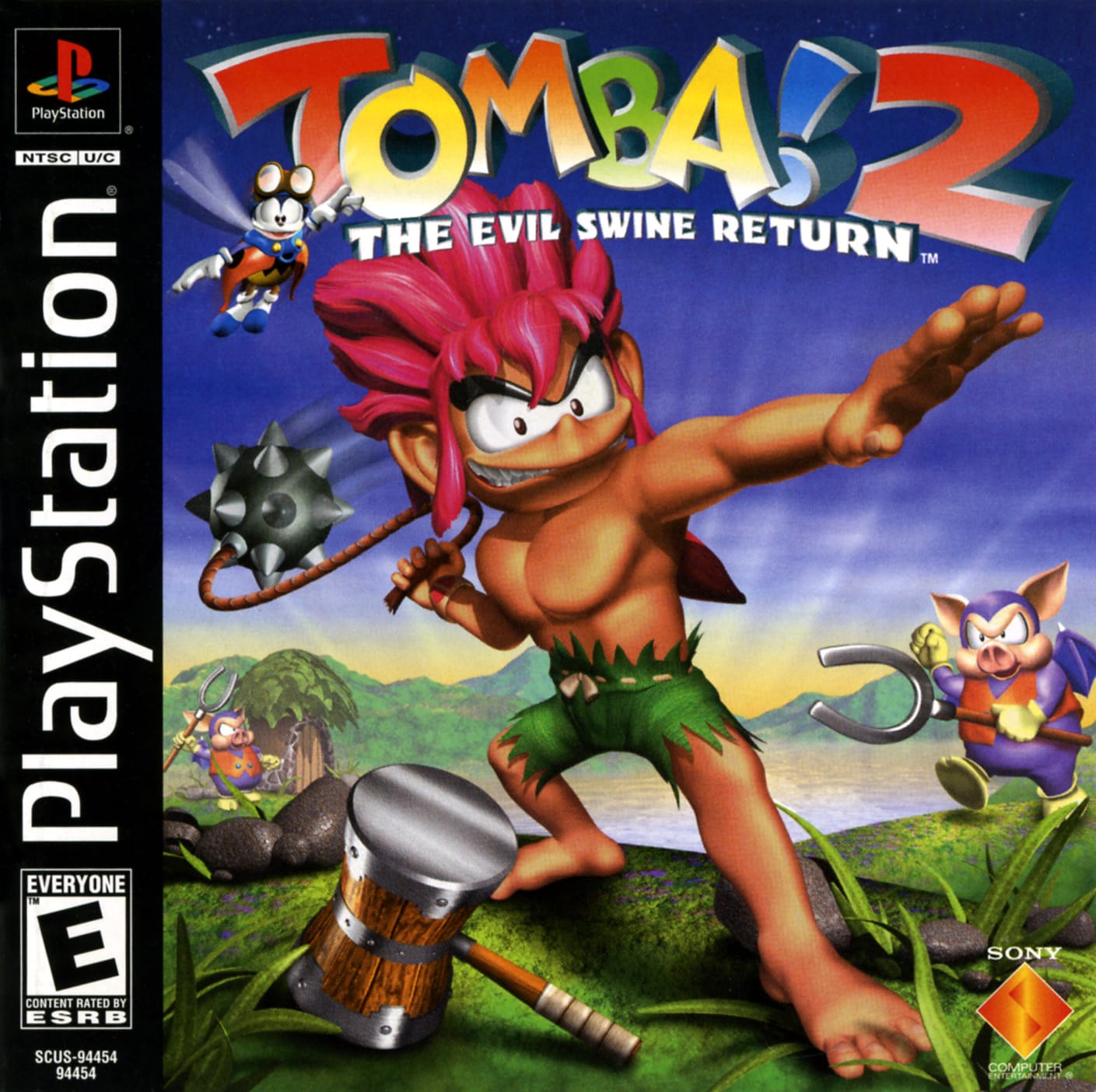
- Developer: Whoopee Camp
- Release Date: October 28, 1999
Tomba! 2: The Evil Swine Return traded in the 2D/2.5D aesthetic for full 3D character models and dynamic camera angles—while still maintaining its side-scrolling roots. The result? A game that feels more alive, immersive, and full of possibility. Tomba is no longer just chasing pigs—he’s searching for his kidnapped childhood friend, Tabby, which gives the journey a surprising emotional center. The quest system is larger and more complex, with over 130 events to complete. The world is more cohesive and densely packed with secrets, mini-games, and weird, wonderful characters who all seem to need your help in some hilariously convoluted way.
Why It’s Worth Playing: Tomba! 2 is a bigger adventure with a bigger heart. It refines the original’s mechanics while opening the door to richer exploration and storytelling. Endlessly charming and packed with content, it’s a sequel that respects its roots while confidently building something even more ambitious—and just as joyfully strange.
Skullmonkeys

- Developer: The Neverhood
- Release Date: February 6, 1998
Skullmonkeys is what happens when you hand a bunch of animators too much clay and just enough acid. The gameplay itself is straightforward—classic run, jump, and stomp action—but it’s wrapped in a deeply strange aesthetic. You’re Klaymen, a silent hero battling armies of deranged, grinning skull-headed freaks across gooey, pulsating landscapes. The soundtrack, composed by Terry Scott Taylor, flips from tribal beats to bizarre lounge tracks, constantly keeping you off-balance. And the cutscenes? Pure chaotic brilliance—darkly comedic and unapologetically bizarre.
Why It’s Worth Playing: Skullmonkeys is unlike anything else on the PS1. Every character, environment, and animation was crafted by hand in stop-motion claymation, giving the game a tactile, otherworldly look that’s still unmatched in gaming. Its commitment to handmade artistry, surreal humor, and raw creativity makes it a cult classic for players who crave something truly off the wall.
Tail Concerto
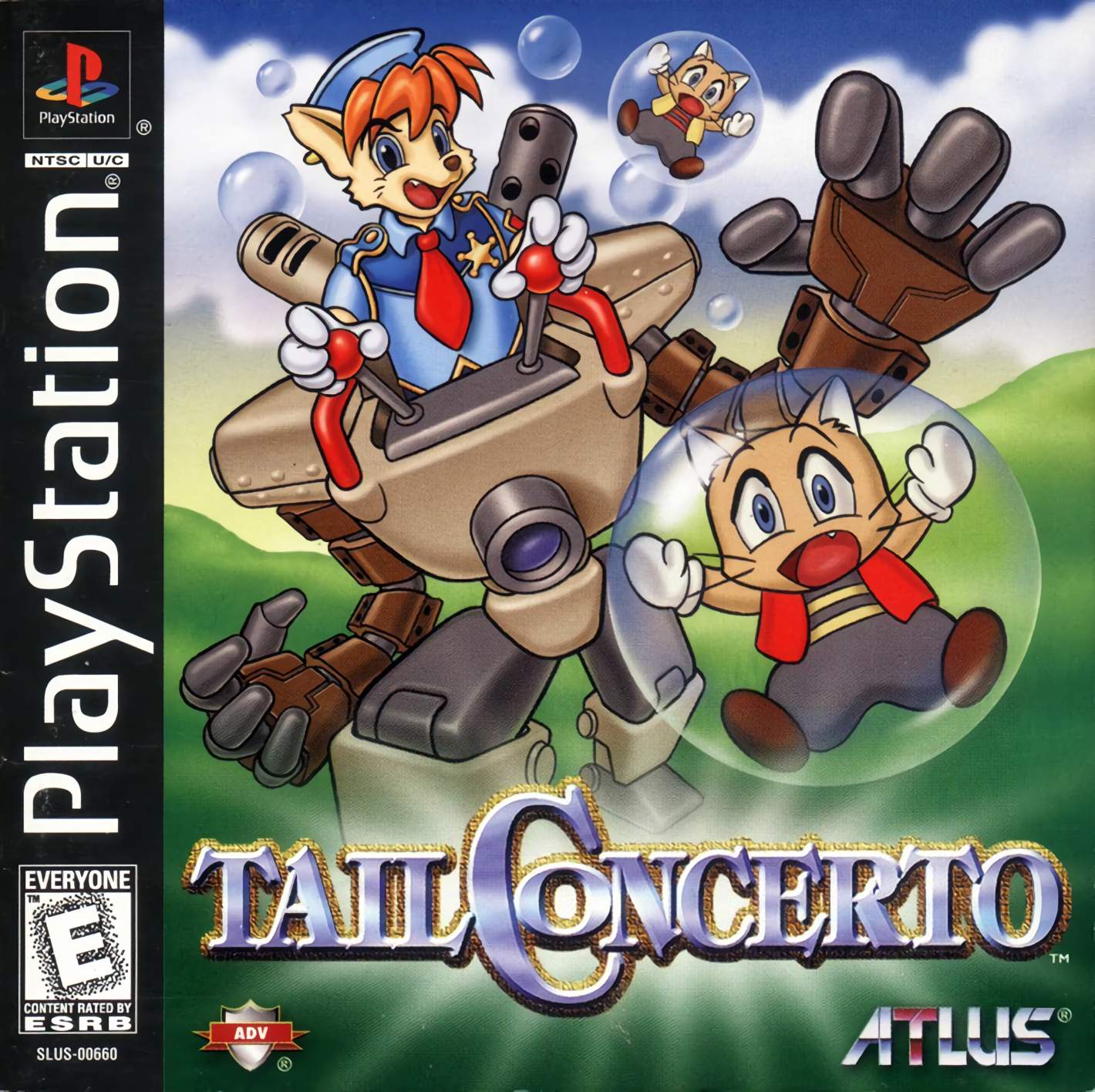
- Developer: CyberConnect
- Release Date: April 16, 1998
Tail Concerto puts you in the boots of Waffle Ryebread (yes, really), a dog-eared police officer piloting a steam-powered mech suit to stop a gang of mischievous feline outlaws causing chaos across floating islands. With its cel-shaded anime aesthetic, heartfelt character interactions, and charming world design, Tail Concerto feels like playing through a lost Studio Ghibli-meets-Sega Saturn-era dream. Gameplay is light but satisfying—you’ll chase down cats, rescue civilians, explore airships and towns, and even engage in some light puzzle-solving.
Why It’s Worth Playing: Tail Concerto is one of the PS1’s most underrated gems—a whimsical action-platformer that blends mecha antics, Saturday morning cartoon vibes, and heartfelt storytelling into one irresistible package. Its gentle tone, lovable characters, and striking visual style set it apart from its more bombastic PS1 peers. If you’re looking for something colorful, comforting, and quietly impactful, this dog-and-cat adventure is a must-play sleeper hit.
Ape Escape

- Developer: SCE Japan
- Release Date: June 22, 1999
Ape Escape didn’t just launch a new franchise—it sparked a control scheme revolution. It was the first PS1 title to require the DualShock controller, turning its twin analog sticks into the foundation for a bold new kind of platformer. At the time, it was mind-blowing—and more than just a gimmick. The premise is joyfully absurd: time-traveling monkeys with mind-control helmets have gone rogue, and it’s your job to chase them across different eras—from prehistoric jungles to sci-fi labs—using an ever-growing arsenal of weird gadgets. Each monkey has its own behavior, making every capture feel like a mini stealth puzzle or action sequence. It’s fast, chaotic, and endlessly creative.
Why It’s Worth Playing: Ape Escape isn’t just a brilliant platformer—it’s a milestone in game design. Its inventive mechanics, slapstick humor, and gadget-driven gameplay keep it fresh even today. If you’ve never flailed a net at a ninja monkey while dodging lasers, you haven’t truly experienced what the PS1 had to offer.
Strider 2
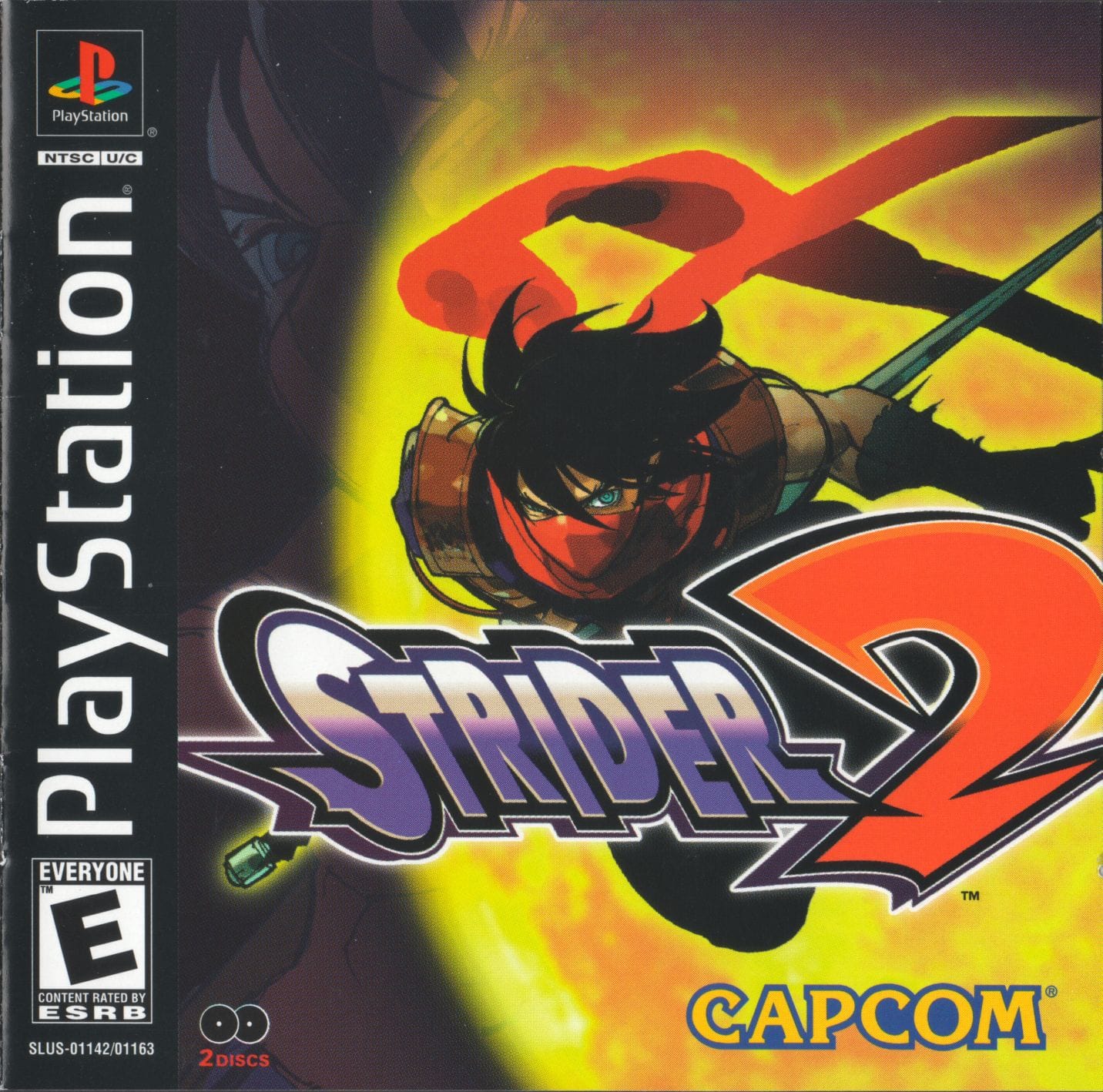
- Developer: Capcom
- Release Date: February 24, 2000
Strider 2 slices through the PS1 platformer lineup like a blade through butter—stylish, relentless, and bursting with kinetic energy. While it leans more toward action-platforming than collect-a-thon territory, its side-scrolling roots and precision-focused gameplay earn it a rightful place among the PS1’s best. Each level is a short, adrenaline-pumping gauntlet packed with bosses, lasers, mechs, and gravity-defying architecture. The controls are razor-sharp, encouraging fluid movement and chaining attacks into slick combos. Add in cinematic cutscenes and a pulse-pounding soundtrack, and Strider 2 feels like a playable anime with arcade teeth.
Why It’s Worth Playing: Strider 2 is perfect for players who want their platformers fast, flashy, and unforgiving. It’s a game that rewards mastery—ideal for speedrunners and action junkies alike. Despite its short runtime, the replayability is sky-high, and every level feels like a carefully choreographed dance of destruction. Pure arcade magic with a PS1 polish.
Oddworld: Abe’s Exoddus
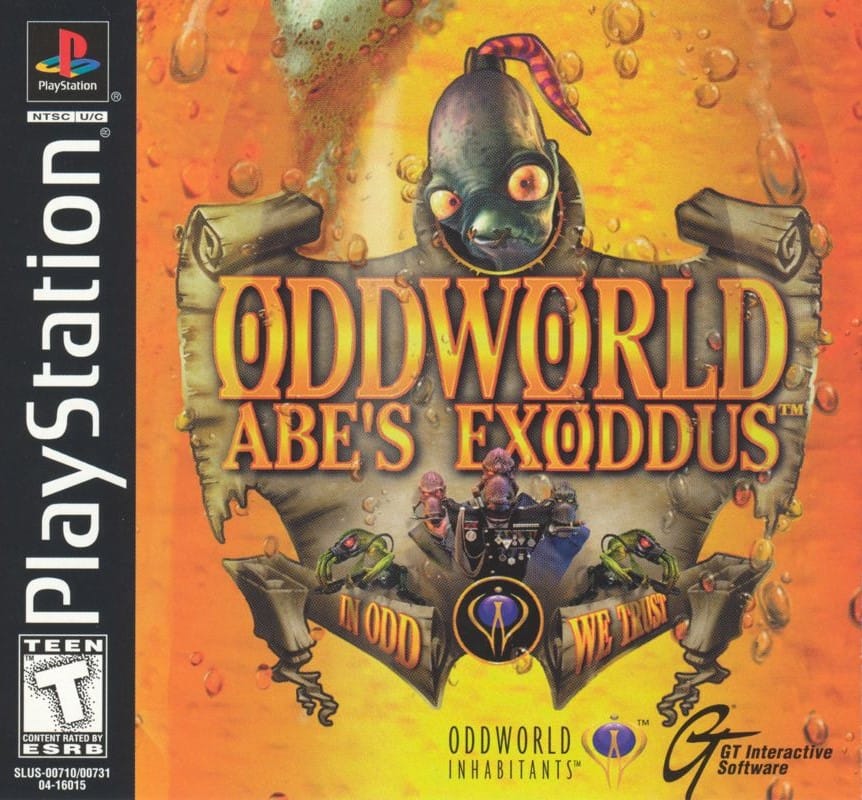
- Developer: Oddworld Inhabitants
- Release Date: November 25, 1998
Oddworld: Abe’s Exoddus isn’t your typical platformer—it’s a haunting, brainy, and deeply satirical journey through one of gaming’s most memorable dystopias. You once again step into the stitched-up feet of Abe, the unlikely Mudokon hero, as he sets out to liberate his enslaved brethren from soul-crushing factories, bone mines, and spirit-brewing slaughterhouses. The platforming is deliberate and puzzle-heavy, demanding precision, planning, and quick thinking. Abe’s expanded GameSpeak system lets you direct multiple followers, influence their behavior, and deal with their quirks—sometimes to hilarious or heartbreaking effect.
Why It’s Worth Playing: This ambitious “bonus” sequel to Abe’s Oddysee refined everything that made the original a cult classic, while doubling down on social commentary and mechanical complexity. It’s a game with heart, teeth, and a conscience—a rare mix that still feels urgent today. Smart, subversive, and unforgettable, it’s one of the most emotionally charged titles on the PS1.
Pitfall 3D: Beyond the Jungle
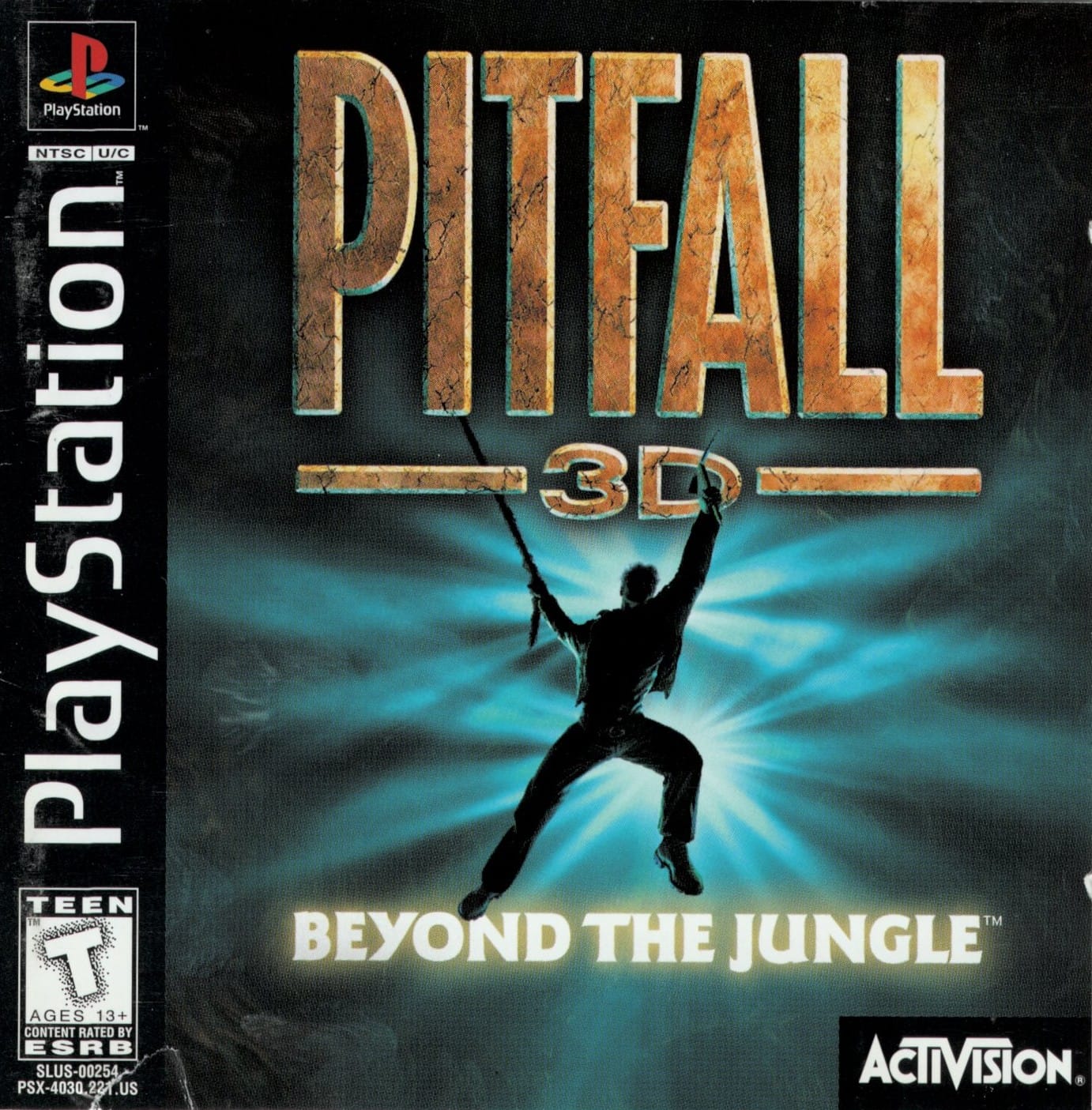
- Developer: Activision
- Release Date: March 27, 1998
This bold reimagining of Pitfall! traded in blocky vines and scorpions for fully 3D worlds, mystical plotlines, and cinematic flair. You play as the iconic Pitfall Harry—now re-cast as a time-hopping, wisecracking explorer—navigating sprawling jungle temples, forgotten realms, and dimensional rifts. The platforming leans into exploration and verticality, with precise jumping, swinging, and trap-dodging wrapped in a moody, ambient soundtrack composed by Twin Peaks’ own Mark Mothersbaugh. While it may not have reached the heights of its PS1 platformer peers, Pitfall 3D: Beyond the Jungle carved out its own niche as an atmospheric and unusually thoughtful adventure.
Why It’s Worth Playing: Pitfall 3D: Beyond the Jungle took one of gaming’s oldest names and flung it headfirst into the 32-bit era—with surprising success. It honors its roots while trying something new, delivering a slower-paced but immersive platformer with unexpected storytelling depth. For fans of the weird and the forgotten, it’s a lost jungle worth rediscovering.
Frogger 2: Swampy’s Revenge

- Developer: Blitz Games
- Release Date: September 21, 2000
Frogger 2: Swampy’s Revenge didn’t just rehash old ideas—it expanded on them with smart level design, snappy controls, and a healthy dose of Saturday morning cartoon energy. The game follows Frogger and his amphibian partner Lillie as they chase the mischievous Swampy across colorful, hazard-filled worlds. Each stage is a race against time and danger, mixing traditional tile-based movement with modern platforming sensibilities. You’ll leap through lava caverns, ice caves, and even outer space, collecting coins, dodging enemies, and tackling increasingly complex puzzles. The soundtrack is upbeat and catchy, the visuals are bright and charming, and it all moves at a satisfyingly brisk pace.
Why It’s Worth Playing: Frogger 2: Swampy’s Revenge took the arcade DNA of the original Frogger—dodging traffic, hopping logs, and timing your every move—and evolved it into a full-blown platforming adventure. It’s lighthearted, polished, and surprisingly addictive—a reminder that platforming greatness can come from the most unexpected places. Don’t sleep on this frog.
Pac-Man World
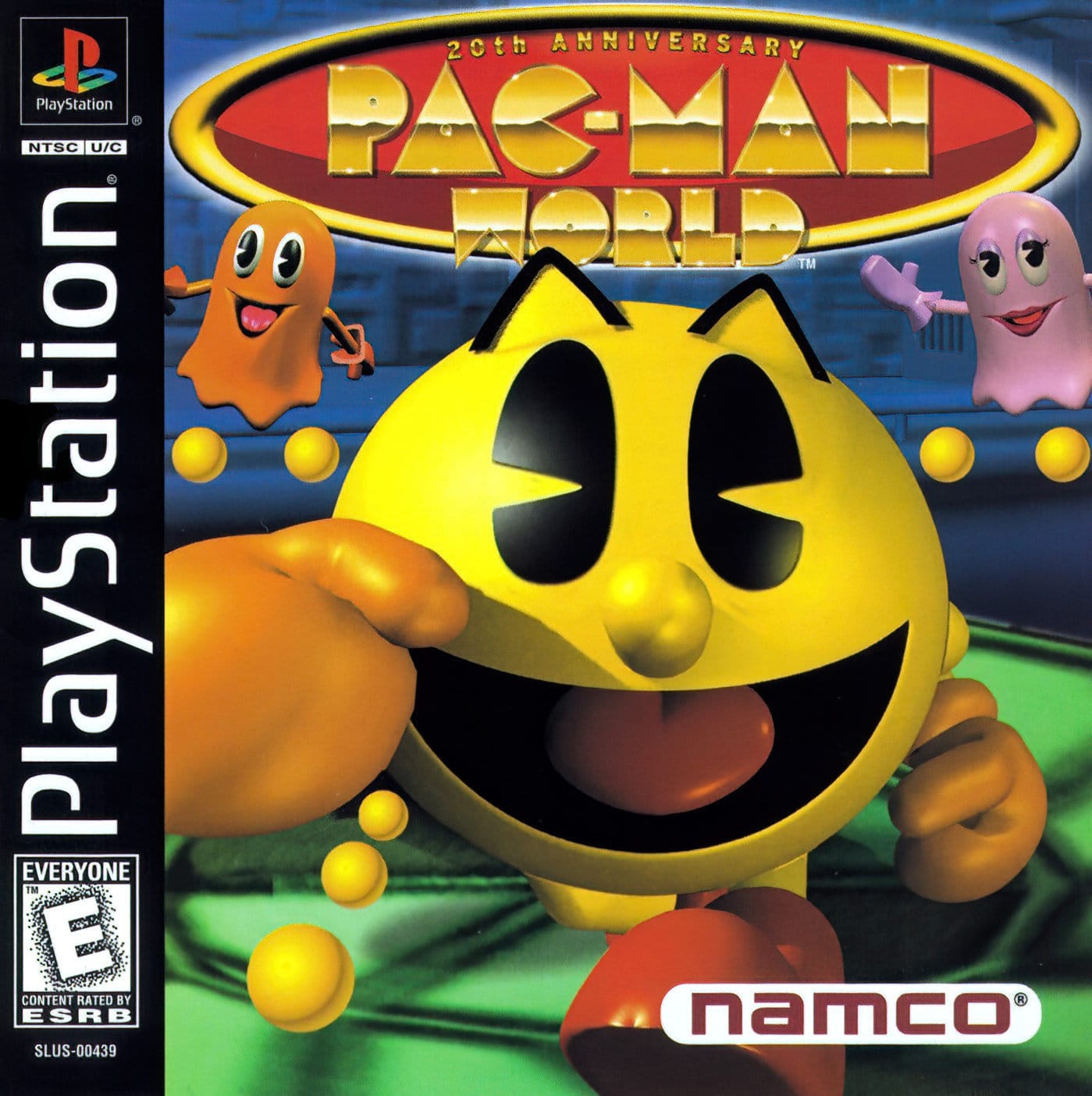
- Developer: Namco
- Release Date: October 15, 1999
Pac-Man World reimagined Pac-Man not just as a maze-running dot-devourer, but as a full-fledged hero in a surprisingly solid adventure. And against all odds, it worked. The game opens with a party gone wrong—Pac-Man’s family has been kidnapped by the nefarious Toc-Man, and it’s up to our spherical hero to rescue them across six themed worlds. Each level blends classic platforming mechanics with nods to Pac-Man’s arcade roots, like pellet-collecting, fruit bonuses, and ghost-chomping power-ups. The controls are tight, the environments are vibrant, and the level design is packed with secrets, puzzles, and verticality that reward both speed and exploration.
Why It’s Worth Playing: Pac-Man World took one of gaming’s most iconic faces and gave him a fresh new dimension—literally. It pays respect to its arcade legacy while confidently stepping into modern gameplay territory. If you’ve only seen Pac-Man on a flat plane, this 3D glow-up will surprise you in the best way.
Toy Story 2: Buzz Lightyear to the Rescue!

- Developer: Traveller’s Tales
- Release Date: November 16, 1999
Toy Story 2: Buzz Lightyear to the Rescue! didn’t just ride the coattails of the beloved Pixar film—it expanded on it with surprisingly polished gameplay, clever level design, and a genuine sense of wonder. You control Buzz Lightyear on a mission to rescue Woody, navigating through sprawling, semi-open 3D environments pulled straight from the Toy Story universe. From Andy’s house to airport tarmacs, every level is a playground of collectibles, secrets, and side missions. The platforming is tight, the jetpack adds a slick layer of verticality, and the voice acting and visuals capture the film’s tone with care and charm.
Why It’s Worth Playing: Buzz Lightyear to the Rescue! isn’t just “good for a movie game”—it’s good, period. It captures the thrill of being a small hero in a big world, blending platforming, exploration, and Pixar magic into one of the PS1’s most charming surprises. This is how you do a licensed game right.
Bugs Bunny: Lost in Time
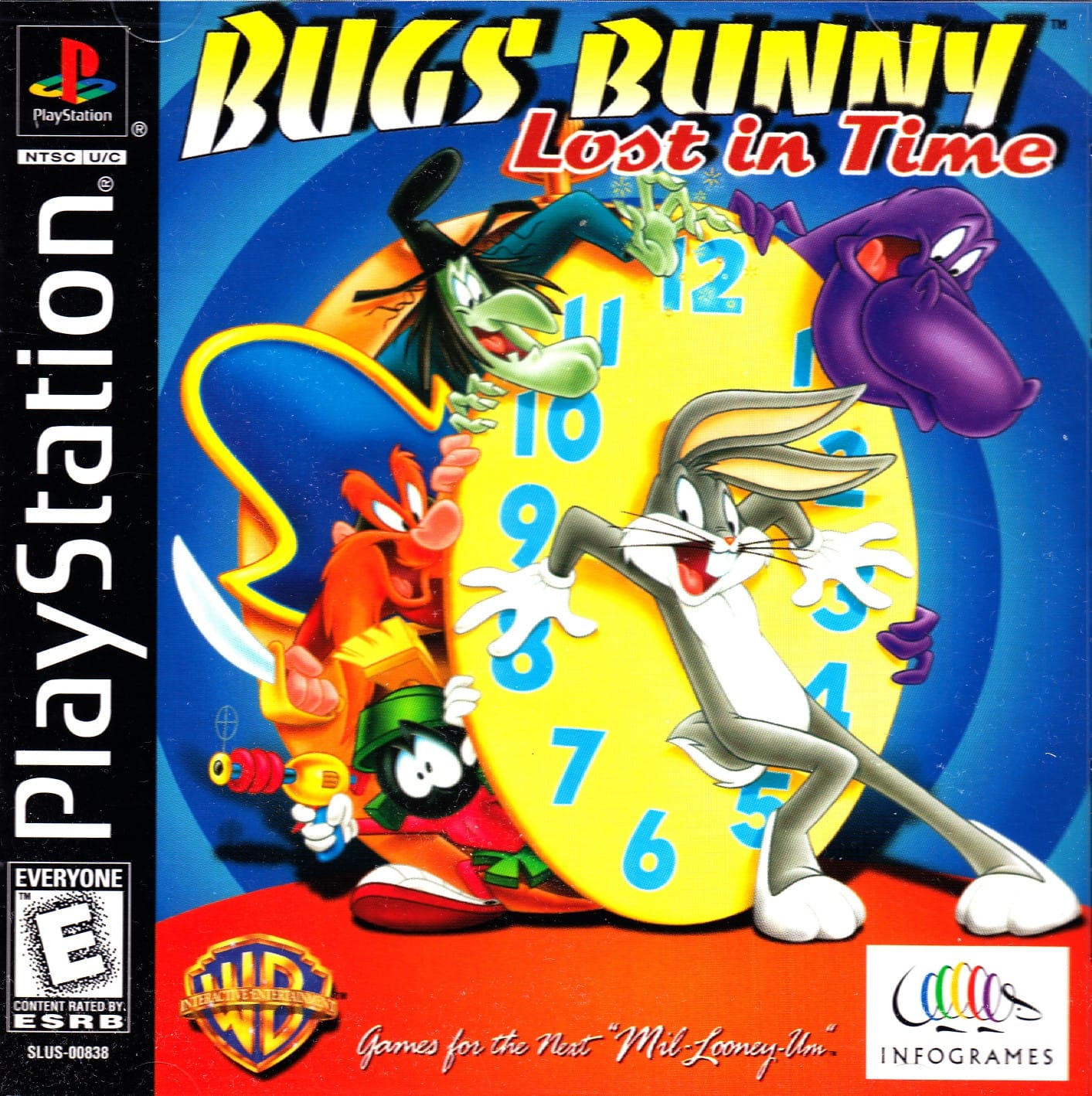
- Developer: Behaviour Interactive
- Release Date: July 1, 1999
Bugs Bunny: Lost in Time flings the wisecracking rabbit across five wildly different time periods, from the Stone Age to medieval castles and far-future sci-fi zones. Each era is packed with slapstick humor, iconic Looney Tunes references, and level design that’s far more thoughtful than you might expect from a licensed cartoon game. Bugs’ moveset evolves as you progress, unlocking new abilities that let you revisit earlier levels in classic Metroidvania fashion. You’ll use mallets, push crates, sneak past enemies, and even tiptoe in classic cartoon style to avoid waking up sleeping guards. The puzzles are just tricky enough to keep you thinking, and the platforming strikes a satisfying balance between challenge and whimsy.
Why It’s Worth Playing: Bugs Bunny: Lost in Time is a Looney Tunes fever dream—and one of the most surprisingly solid platformers of the late PS1 era. With clever design, plenty of fan service, and a playful tone that never takes itself too seriously, it’s a nostalgic romp that holds up surprisingly well. A must-play for toon lovers and platformer fans alike.
Jackie Chan Stuntmaster
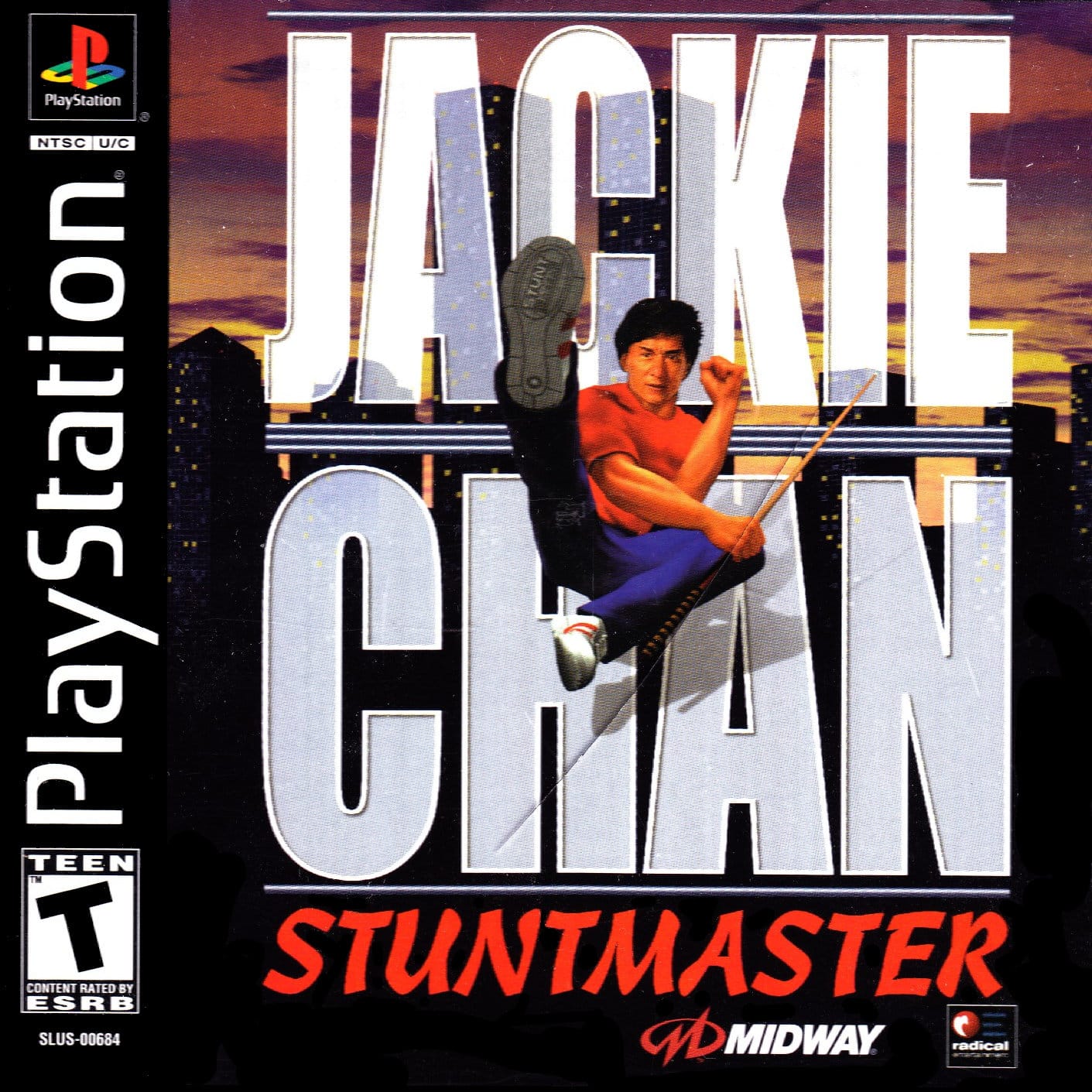
- Developer: Radical Entertainment
- Release Date: March 28, 2000
Jackie Chan Stuntmaster stars a fully motion-captured Jackie—complete with his voice and signature slapstick energy—as he kicks, flips, and parkours his way through the gritty backstreets of New York City on a quest to rescue his kidnapped grandfather. The platforming is snappy, the combat is fluid, and the environments are packed with interactive elements that let you fight with everything from broomsticks to traffic cones. It’s all about creativity and rhythm—you’ll vault off walls, slide under obstacles, and chain together ridiculous combos with cartoonish flair. Each level is designed like a set piece from one of his movies, and it feels just as fun to play as it does to watch.
Why It’s Worth Playing: Jackie Chan Stuntmaster may look like a licensed cash-in at first glance, but behind its simple premise lies one of the PS1’s most entertaining and underrated action-platformers. It’s fast-paced, easy to pick up, and full of charm. If you ever wanted to be Jackie Chan in a video game, this is as close as it gets—and it absolutely sticks the landing.
Donald Duck: Goin’ Quackers
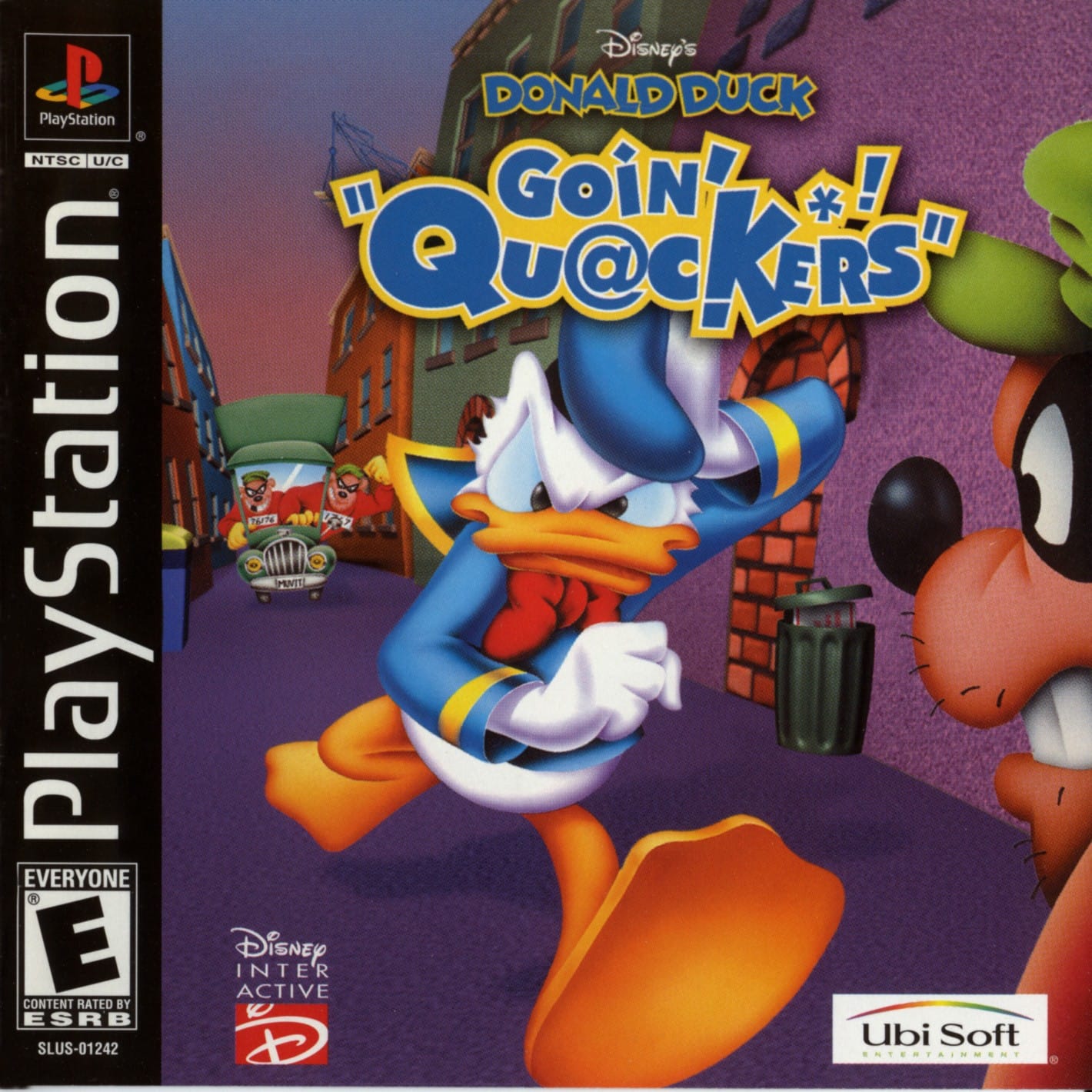
- Developer: Ubi Soft Shanghai
- Release Date: October 2000
Often overshadowed by its more famous Disney peers, Donald Duck: Goin’ Quackers (also known as Donald Duck: Quack Attack) is a surprisingly polished and fast-paced platformer that deserves far more attention. The game takes heavy inspiration from Crash Bandicoot, with linear, corridor-like levels, dynamic camera angles, and a mix of 2D and 3D perspectives. Donald’s animations are full of personality, with comical rage bursts and expressive reactions that feel right out of a classic cartoon. It’s accessible for younger players, yet snappy enough to keep seasoned platforming fans hooked. The level design is tight, the controls responsive, and the whole experience feels like a Saturday morning cartoon you can play.
Why It’s Worth Playing: Goin’ Quackers isn’t just a fun Disney romp—it’s a genuinely competent and entertaining platformer in its own right. Its crisp visuals, expressive humor, and streamlined gameplay make it a hidden gem in the PS1’s vast library, and a must-play for anyone who loves character-driven platformers.
Tarzan

- Developer: Eurocom Entertainment Software
- Release Date: June 30, 1999
Tarzan adapts the Disney animated film’s action-packed sequences into fast-paced, side-scrolling levels filled with vine-swinging, tree-surfing, and jungle-peril aplenty. The animation is fluid and expressive, mirroring the film’s dynamic visual style with hand-drawn character sprites and lush, layered backgrounds. You’ll play as Tarzan through different stages of his life, using his growing abilities—throwing fruit, wielding a spear, and mastering jungle acrobatics—to survive encounters with leopards, poachers, and collapsing terrain. Chase sequences keep the adrenaline high, while quieter moments capture the movie’s emotional beats and coming-of-age arc.
Why It’s Worth Playing: Tarzan might have been built as a movie tie-in, but what it delivered was a slick, kinetic platformer with more heart (and muscle) than most licensed games dared to show. It’s one of the better Disney titles on the PS1—short, sweet, and packed with polish. With its fast pacing, gorgeous visuals, and surprisingly satisfying gameplay, this jungle adventure deserves a second swing.
SpongeBob SquarePants: SuperSponge
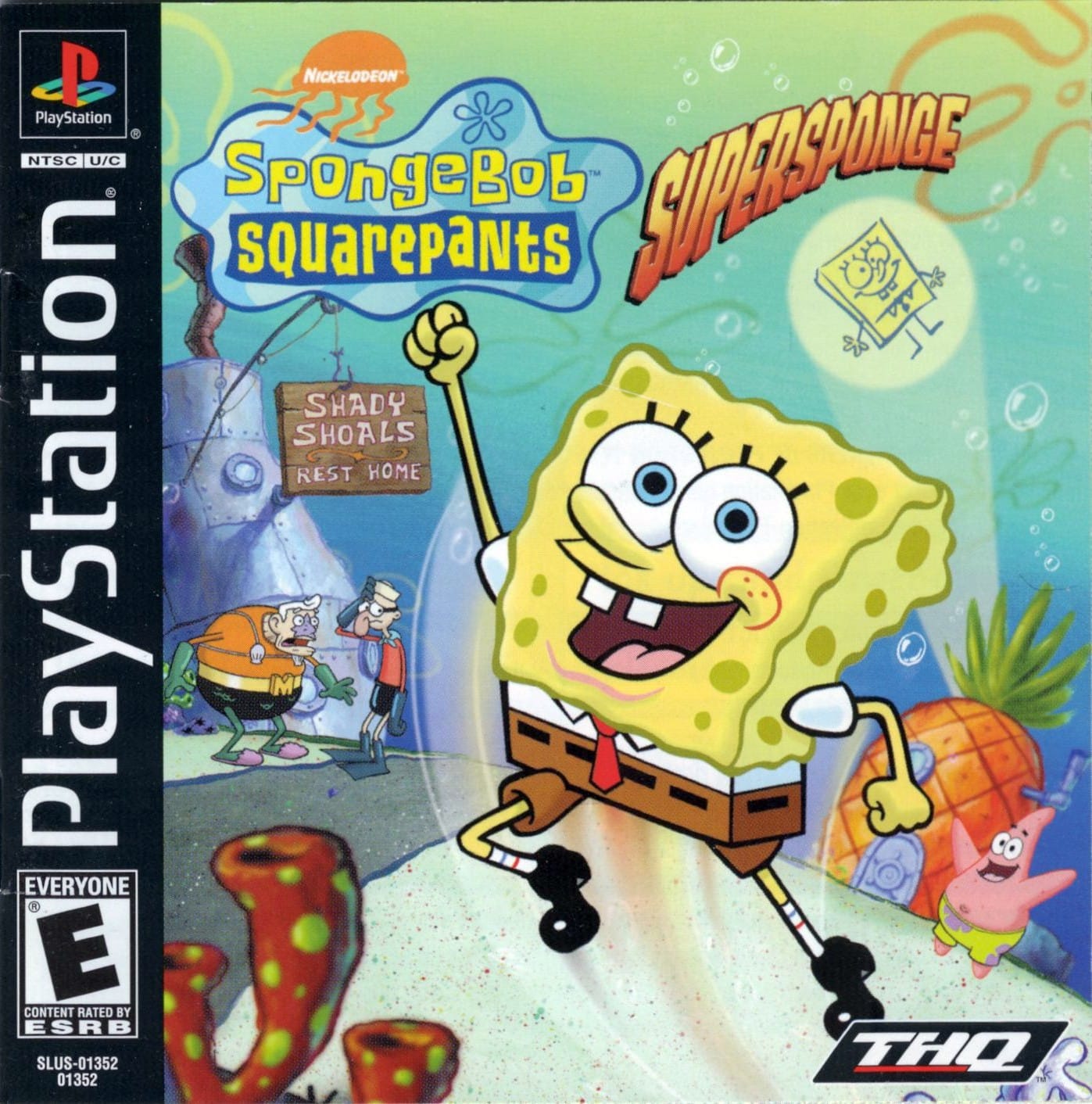
- Developer: Climax Group
- Release Date: September 20, 2001
What could’ve easily been a phoned-in cartoon cash-in turned out to be a legitimately decent platformer with tight controls, vibrant visuals, and a storyline that leaned into the show’s signature absurdity. In SuperSponge, SpongeBob embarks on a quest to collect autographs from Mermaid Man and Barnacle Boy—naturally, this leads to jellyfish dodging, bubble-blowing, and navigating wacky levels like “Dried Out Underwear World” and “Condiment Caverns.” The game’s mechanics are simple but responsive, and the levels have a charming 2.5D design with bright, saturated colors that echo the series’ visual flair.
Why It’s Worth Playing: It may not be the deepest platformer on the system, but SuperSponge brings just enough personality and polish to make it a worthy entry. For fans of the early seasons or younger gamers looking for a forgiving but fun experience, this one’s more than just a novelty—it’s Bikini Bottom with a solid bounce.
Treasure Planet
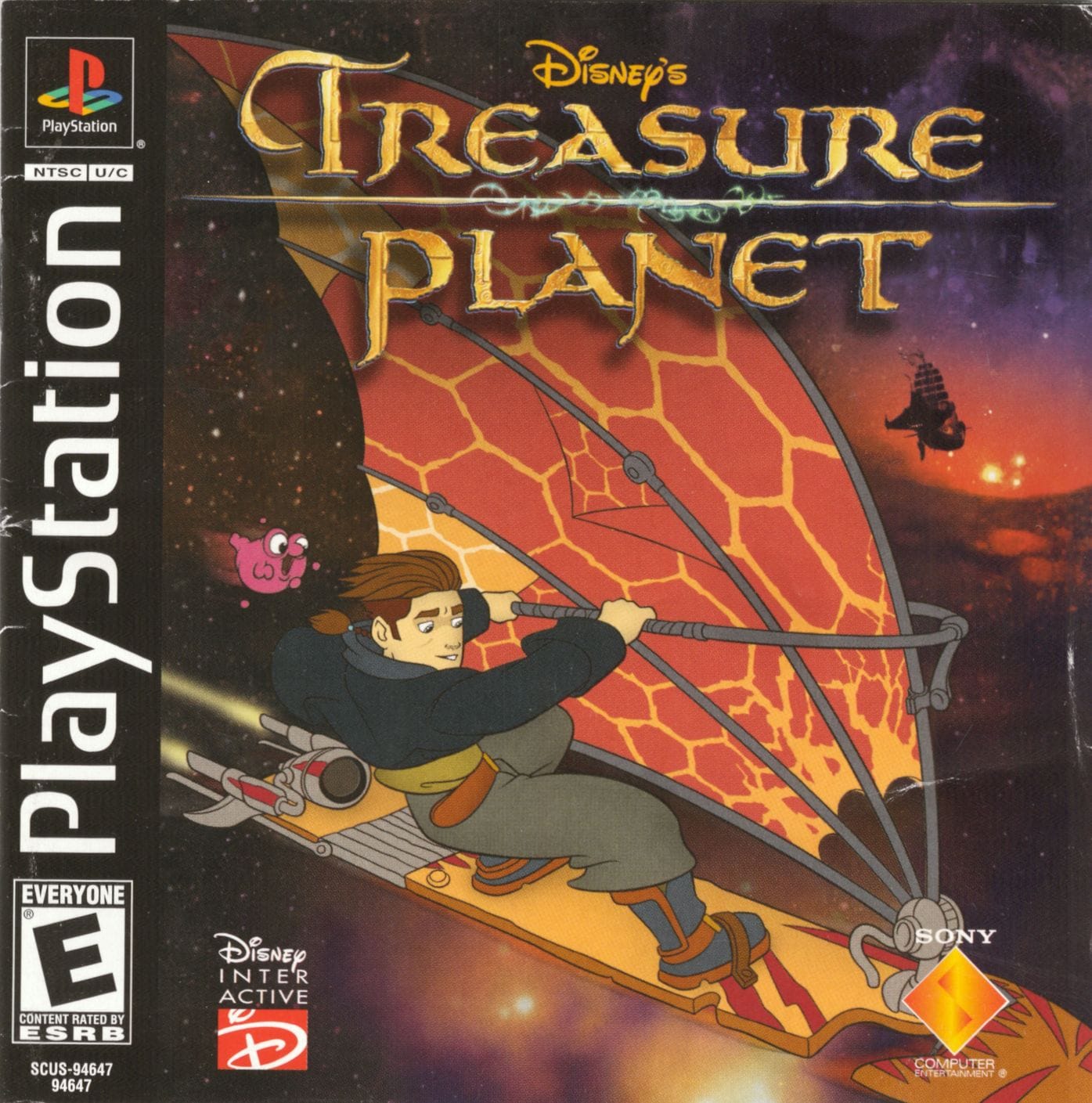
- Developer: Magenta Software
- Release Date: November 11, 2002
Based on Disney’s criminally underrated sci-fi reimagining of Treasure Island, this late-era release blends classic platforming sensibilities with futuristic flair. You step into the boots of Jim Hawkins, navigating steampunk-inspired alien worlds, dodging hazards, and using his solar surfboard for hoverboarding segments that add variety and speed. The core gameplay stays rooted in tried-and-true mechanics—leaping, collecting, light combat—but the game’s sleek art direction and space-pirate atmosphere help it stand out from the pile of generic tie-ins. The hoverboarding in particular feels fresh, echoing Tony Hawk’s influence with a sci-fi twist.
Why It’s Worth Playing: Arriving when the PS2 had already taken center stage, Treasure Planet might’ve seemed like an afterthought. But look a little closer, and you’ll find that this game is one of those rare adaptations that treats its source material with respect and manages to inject real fun into the formula. It's slick, creative, and criminally overlooked—a worthy swan song for the PS1’s long legacy of hidden gems.
Jumping Flash
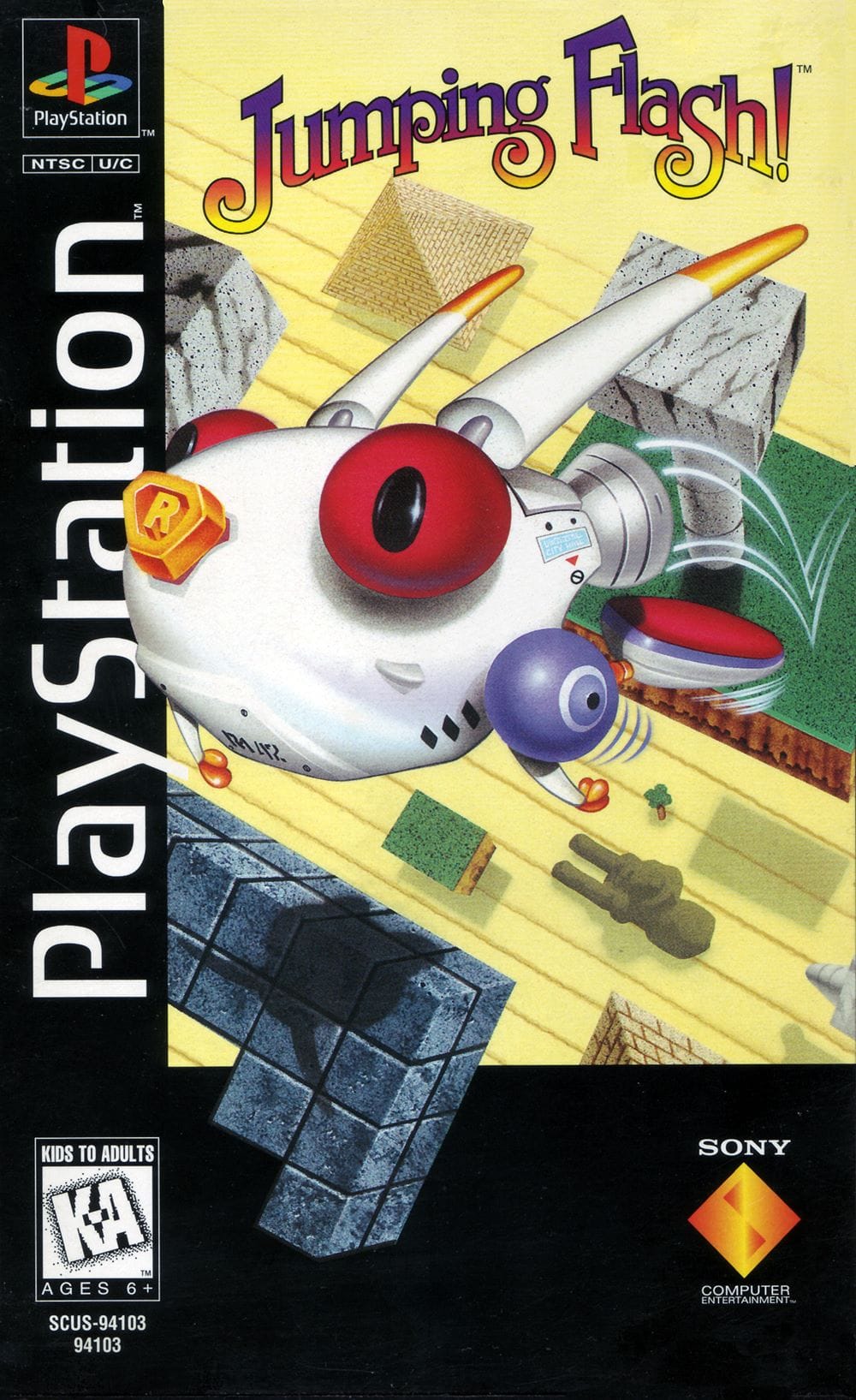
- Developer: Exact, Ultra
- Release Date: April 28, 1995
Before Super Mario 64 became the gold standard, Jumping Flash! quietly blazed the 3D platforming trail. This quirky gem stars Robbit, a robotic rabbit launched into bizarre, sky-high levels in search of missing Jet Pods. And here’s the kicker: it’s all in first-person. That’s right. Long before VR headsets hit the mainstream, Jumping Flash! gave players a verticality-driven, first-person experience unlike anything else on consoles. You’re bouncing between floating platforms, peering down mid-jump to land with precision, and blasting enemies with laser fire. The whimsical tone, colorful polygonal visuals, and surreal soundtrack give it a unique charm that still resonates with fans of oddball innovation.
Why It’s Worth Playing: It’s not just a historical curiosity—it’s a genuinely fun, mind-bending platformer. With its floaty mechanics, trippy environments, and genre-defining ambition, Jumping Flash! is a reminder that the PS1 was fearless when it came to experimentation. A cult classic that still leaps off the screen today.
Jumping Flash 2
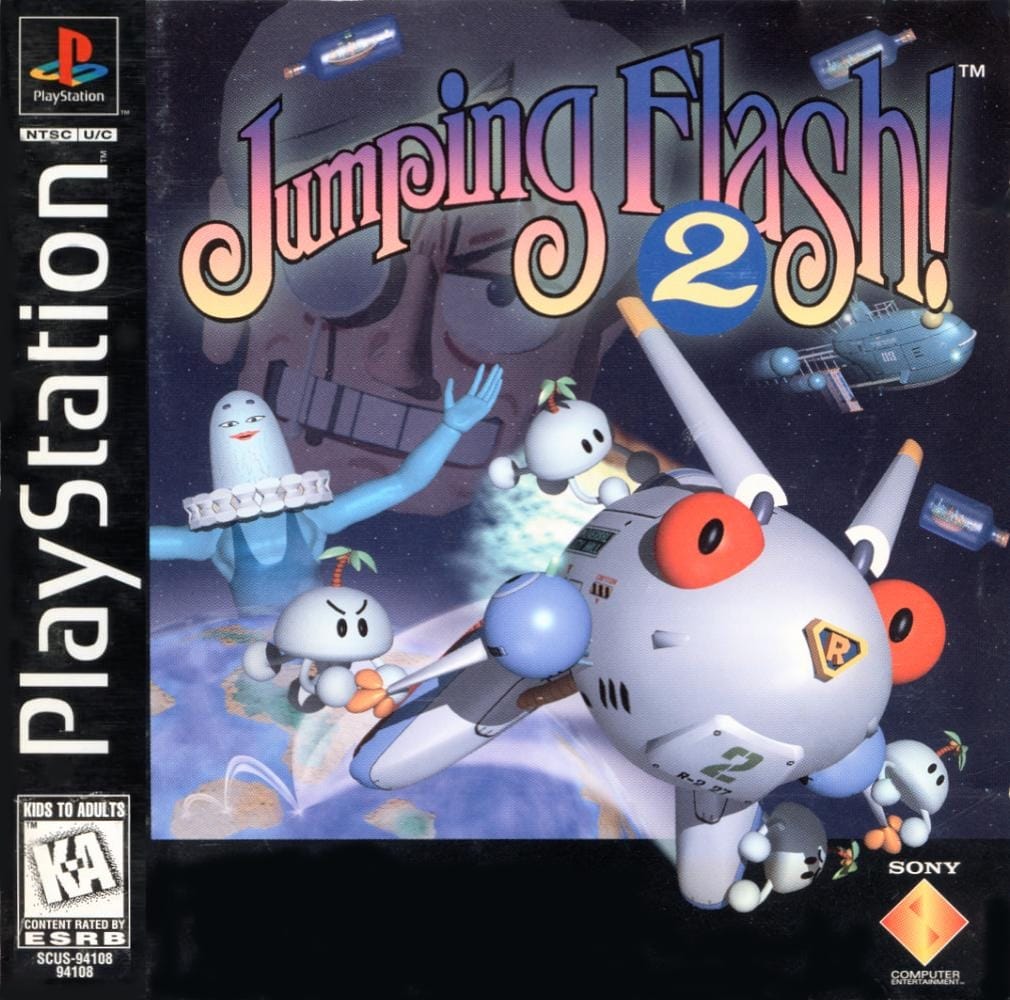
- Developer: Exact, MuuMuu
- Release Date: April 26, 1996
Jumping Flash 2 took the surreal vertical playgrounds of the original and amplified them with more expansive levels, smoother controls, and richer environments. Enemies are more varied, platforming challenges more refined, and the game’s sense of vertical scale remains jaw-dropping. The first-person view—still rare in platformers today—turns every leap into a moment of suspense, especially as you peer down to nail that perfect landing. The improved graphics and livelier animations give Jumping Flash 2 a vibrant, Saturday-morning cartoon feel, without losing its experimental edge.
Why It’s Worth Playing: It’s a true refinement of a foundational idea. Jumping Flash 2 doesn’t just hop in place—it soars higher, making it one of the most daring and delightfully weird sequels on the PS1. For fans of platforming with a twist (or a jump), it remains a must-play piece of 3D gaming history.
Croc: Legend of the Gobbos
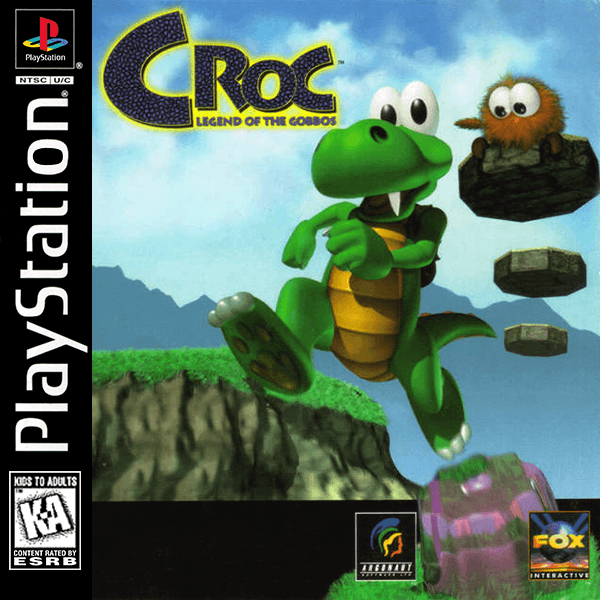
- Developer: Argonaut Software
- Release Date: September 26, 1997
Developed by Argonaut Software—yes, the same minds behind the Star Fox tech—Croc was originally pitched as a Yoshi game for Nintendo. When that didn’t pan out, it found a home on the PlayStation, becoming an early mascot hopeful for Sony. You play as the titular Croc, a wide-eyed reptile on a mission to rescue fuzzy creatures called Gobbos from the evil Baron Dante. The game’s worlds are chunky, bright, and brimming with that mid-‘90s low-poly charm. But while it nails the Saturday cartoon aesthetic and collectible-driven formula, the tank-like controls and fixed camera often trip up the experience. Still, there’s a genuine warmth and earnestness to Croc that’s hard not to root for.
Why It’s Worth Playing: It’s a scrappy, heartfelt contender in the PS1’s mascot wars, and it laid groundwork for what 3D platformers could be. Flawed? Sure. But Croc has charm for days—and a legacy that still makes fans nostalgic for the era of gumption over polish.
Gex: Enter the Gecko
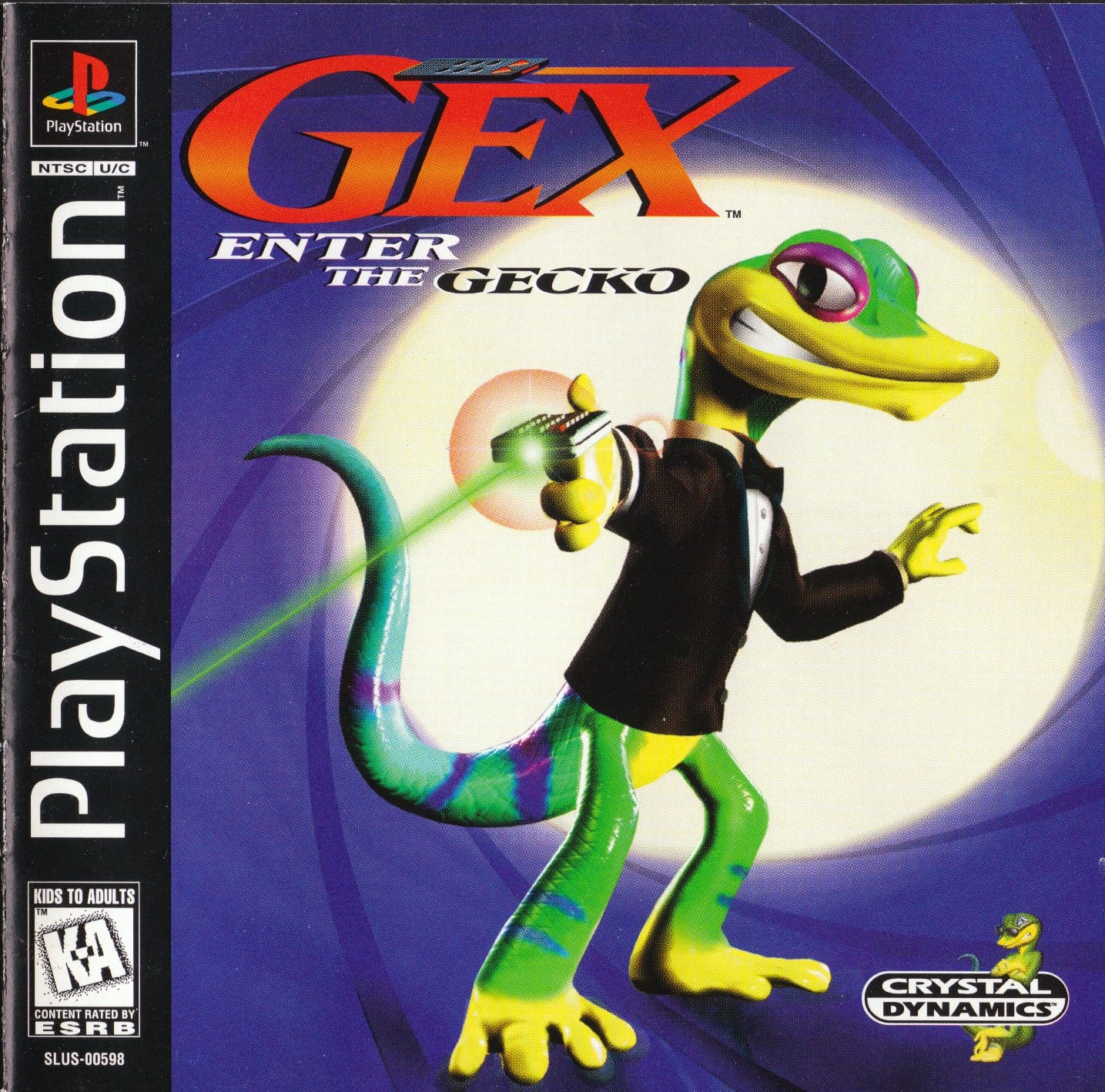
- Developer: Crystal Dynamics
- Release Date: February 24, 1998
If there was ever a game that screamed late-’90s attitude, Gex: Enter the Gecko would be it—loud, irreverent, and obsessed with all things pop culture. Each level riffs on a different television genre—horror, sci-fi, kung fu, Looney Tunes absurdity—giving the game a hyperactive variety that matches Gex’s own quip-a-minute personality. Built around a hub world and open-ended stage selection, Enter the Gecko brings a more expansive platforming experience than many of its mascot contemporaries. Wall-climbing, tail-whipping, and remote-collecting fill out the moveset, but it’s the sheer commitment to parody and pastiche that gives Gex his peculiar charm.
Why It’s Worth Playing: Gex: Enter the Gecko isn’t just a platformer—it’s a time capsule of 1990s media obsession, delivered with sarcasm and surrealism. The platforming may not be as tight as genre titans, but its creativity and attitude make it a cult classic worth flipping back to. It’s a game that wants you to know it watches TV, too—maybe too much.
Gex 3: Deep Cover Gecko
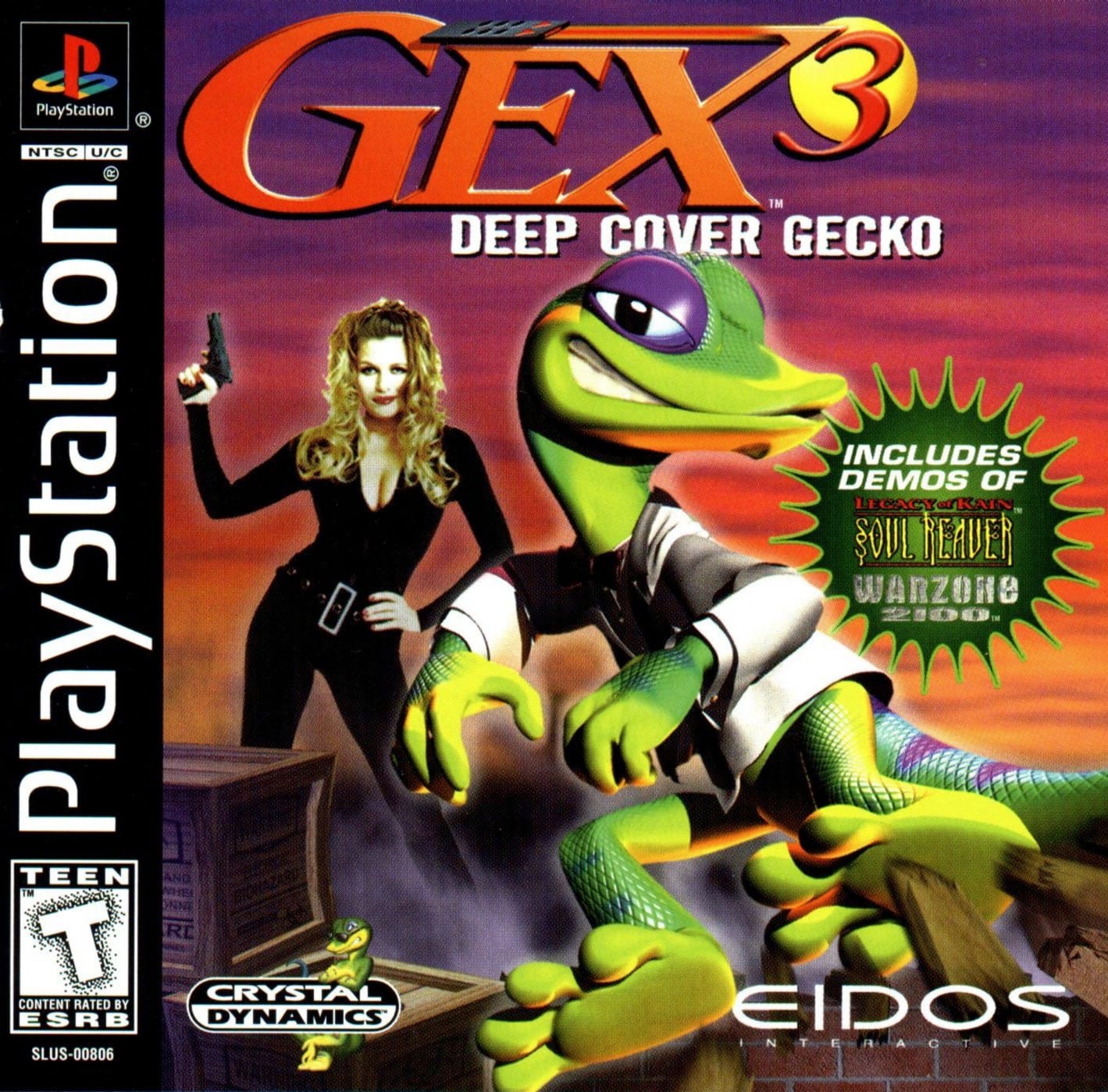
- Developer: Crystal Dynamics
- Release Date: March 23, 1999
If Enter the Gecko was a cheeky jab at pop culture, Gex 3: Deep Cover Gecko was a full-on body slam—delivering even more bizarre levels, louder jokes, and an unapologetic blast of late-’90s energy. With live-action FMV cutscenes featuring Baywatch actress Marliece Andrada (yes, really) and stage names like “Samurai Night Fever,” Gex 3 was a game that gleefully threw subtlety out the window. Gameplay-wise, it expanded the original’s formula with more variety: vehicle segments, secret agents, snowboarding, and plenty of collectibles scattered across a hub that was bigger and more elaborate than before.
Why It’s Worth Playing: Deep Cover Gecko is the maximum Gex experience—chaotic, colorful, and oozing ’90s personality. While the gameplay polish didn’t quite catch up with its creative ambition, Deep Cover Gecko remains a fascinating artifact of a time when platformers weren’t afraid to be loud, weird, and completely off the rails.
Final Thoughts
The PlayStation 1 was more than just Sony’s freshman console—it was a breeding ground for some of the boldest, weirdest, and most imaginative platformers the genre has ever seen. Developers were experimenting wildly, with no rigid formulas to follow. The result? A melting pot of gameplay mechanics, art styles, and tone shifts that gave birth to unforgettable experiences. From emotional 2.5D journeys like Klonoa, to pure mascot mayhem with Crash and Spyro, these games dared to define what platforming could be in 3D.
Even decades later, PS1 platformers continue to resonate—not just because of nostalgia, but because they were built on tight design, expressive characters, and that rare willingness to take risks. They weren’t always perfect, but they were personal. And in a modern landscape filled with remakes, retro revivals, and spiritual successors, their DNA is everywhere. Whether you’re a returning fan or a curious newcomer, this list proves the PS1’s platforming library isn’t just a relic—it’s a legacy.
We’ve leapt across lava pits, soared through dreamlike skies, and wrangled monkeys with analog sticks—but now it’s your turn. Which PS1 platformer lives rent-free in your memory? Was it the gravity-defying charm of Jumping Flash, the claymation chaos of Skullmonkeys, or a deep-cut favorite no one ever talks about?
Drop your pick in the comments below or rally your retro crew and share this list. Let’s celebrate the weird, the wild, and the wildly underrated. The PS1 platformer era was a special kind of magic—and it deserves to be remembered, replayed, and shouted from the rooftops (or at least your Twitter feed).

